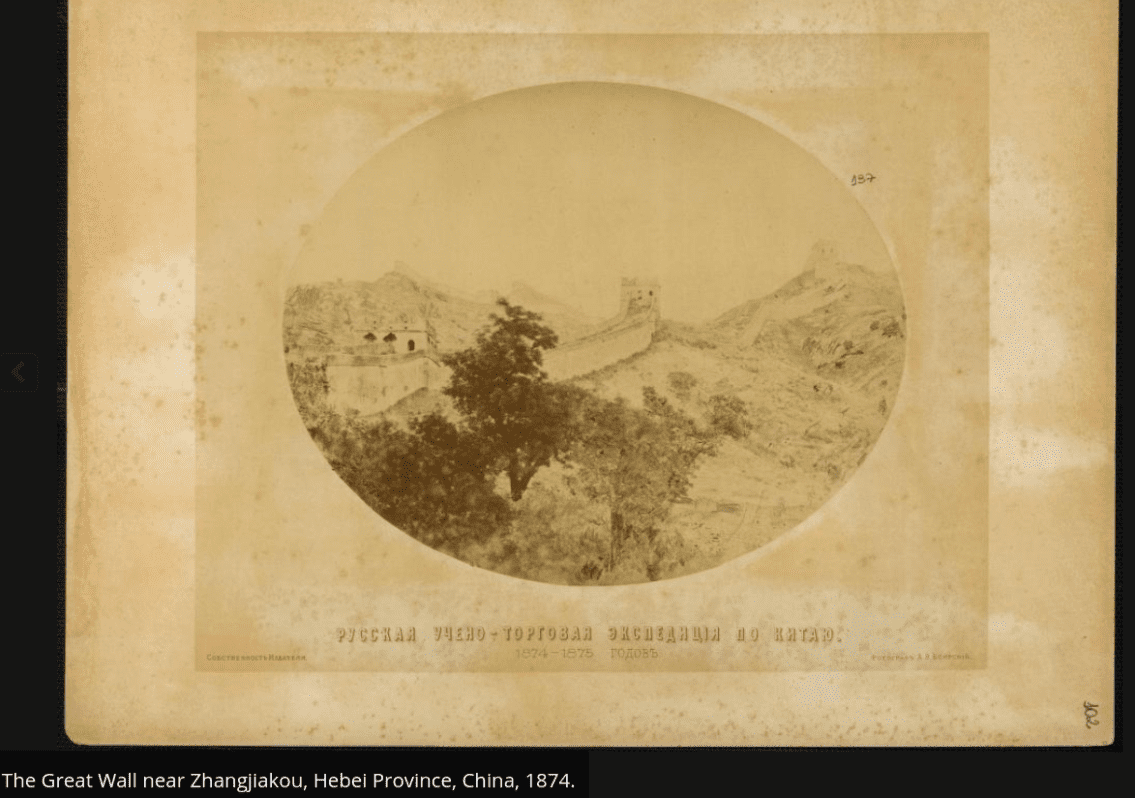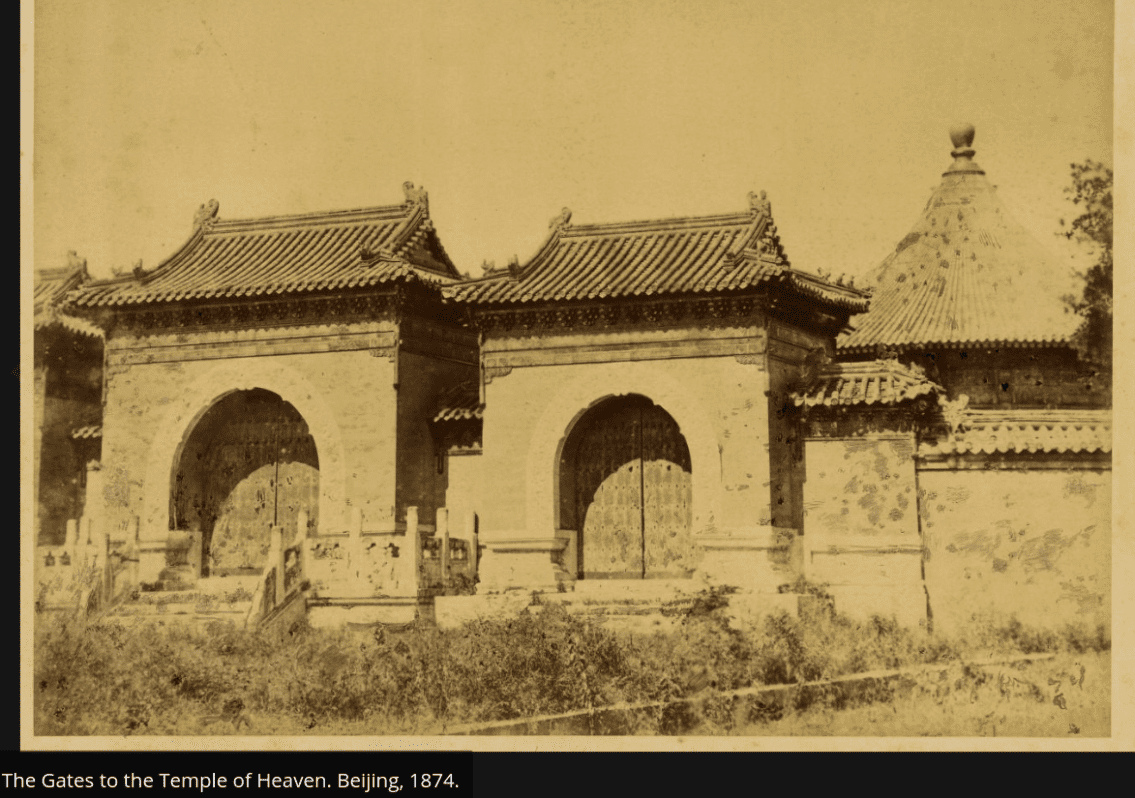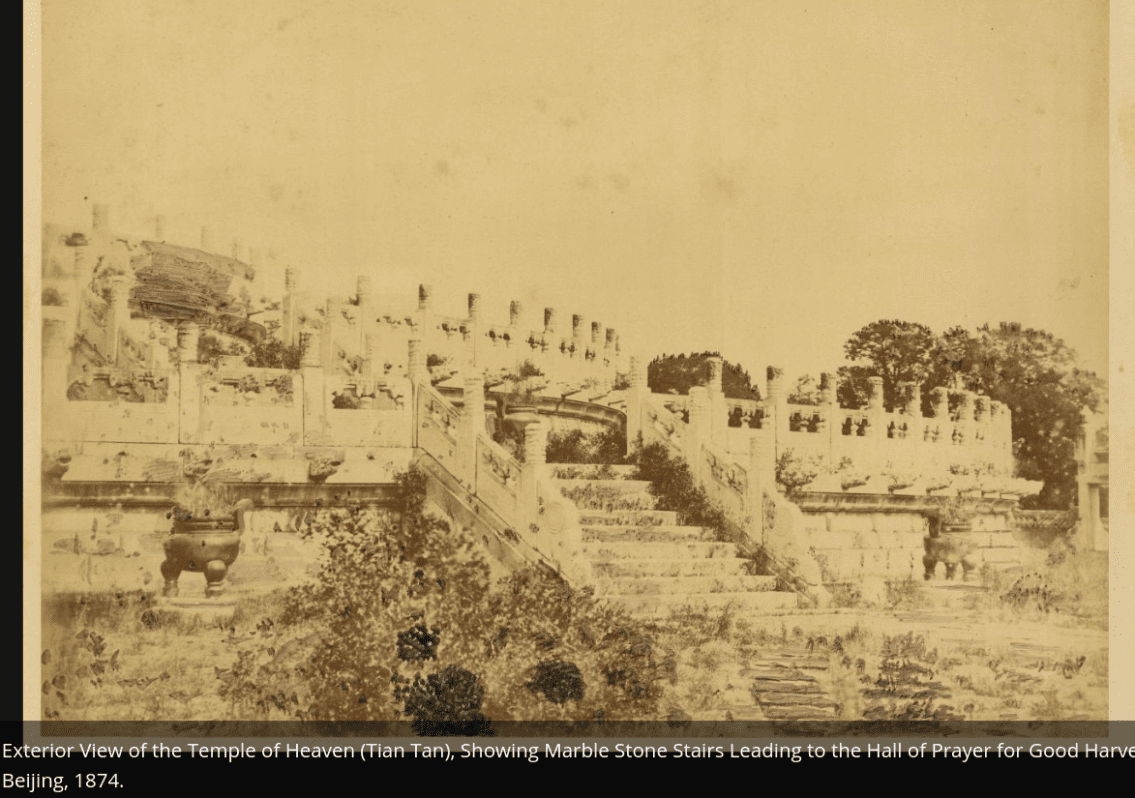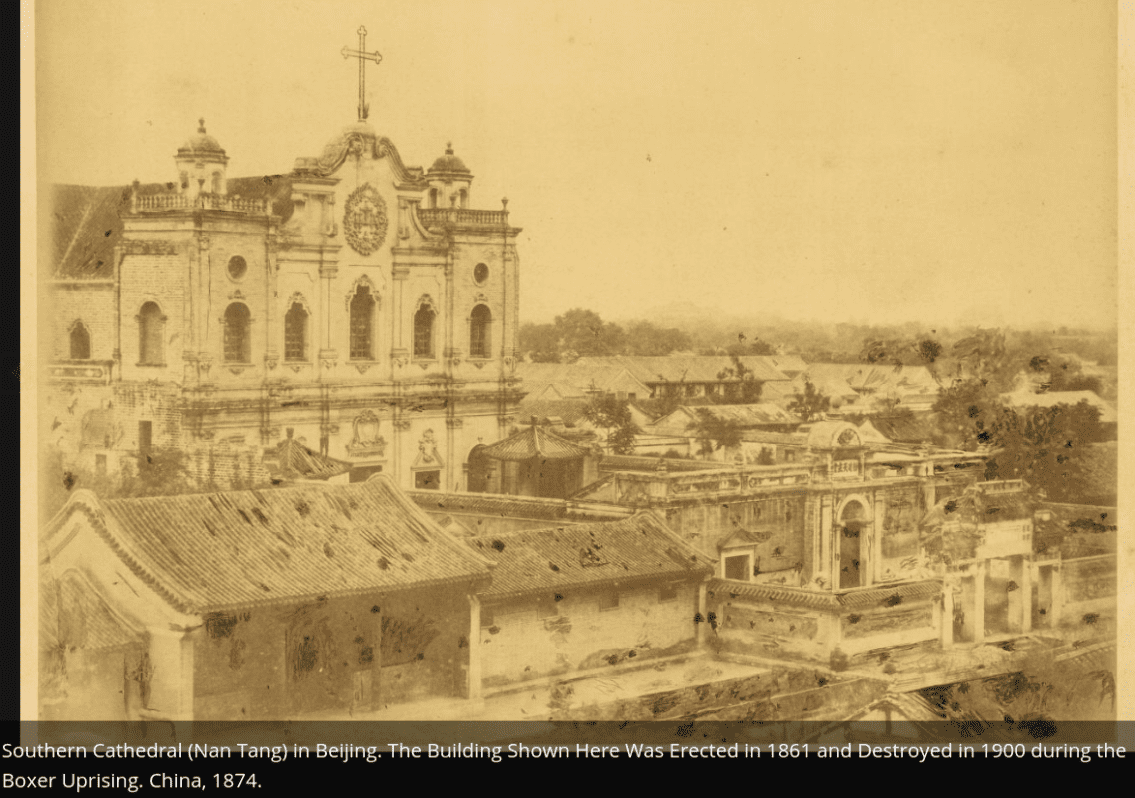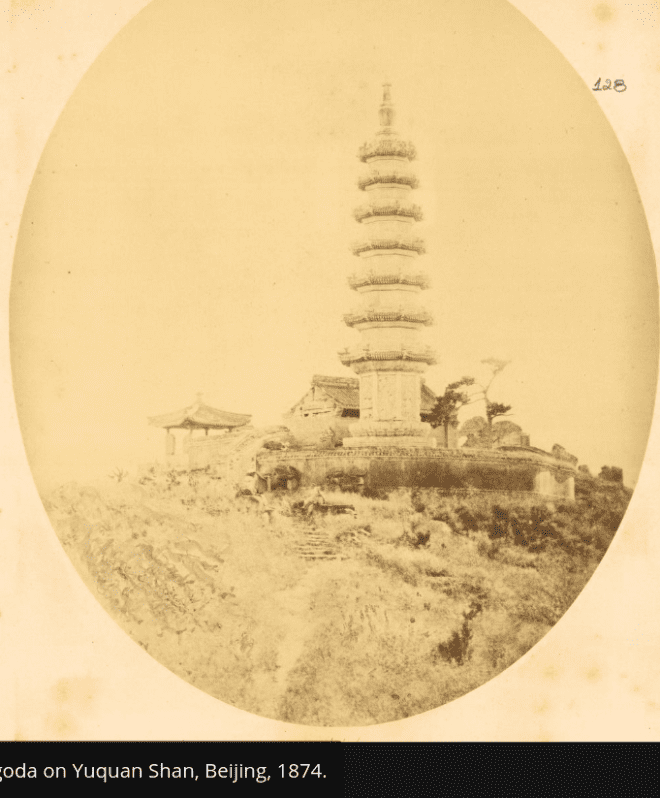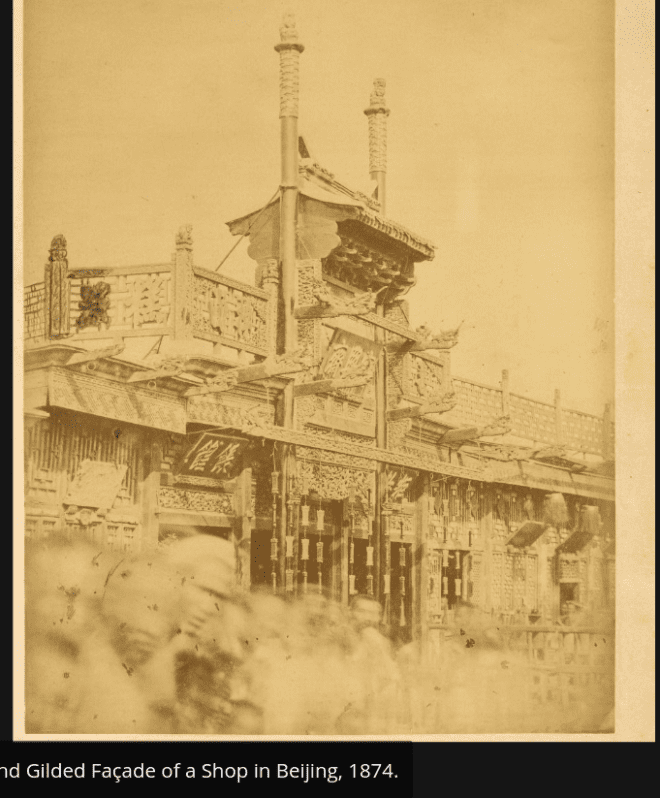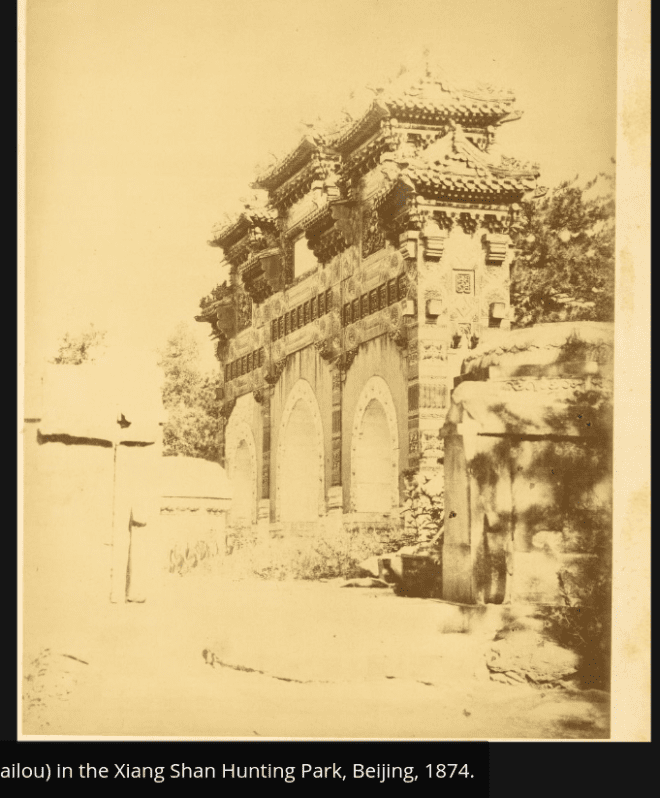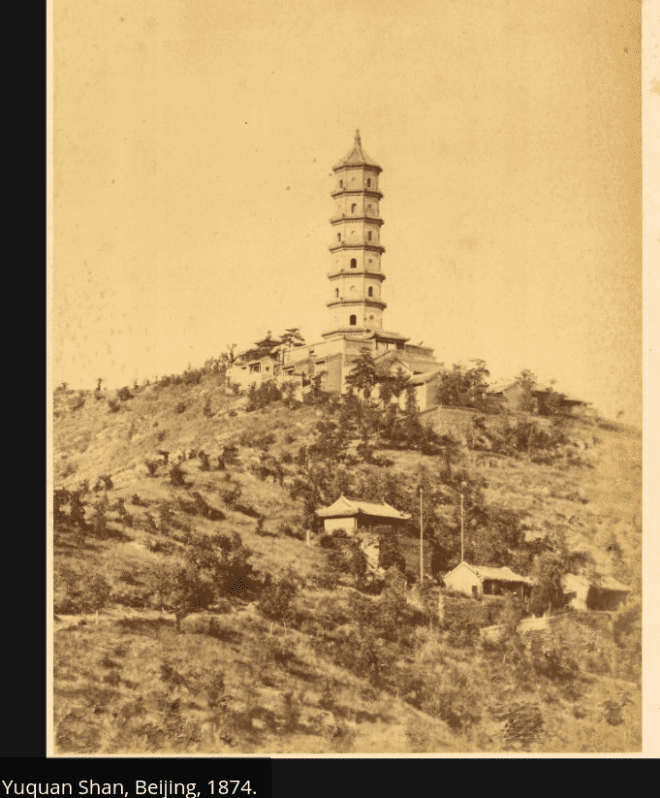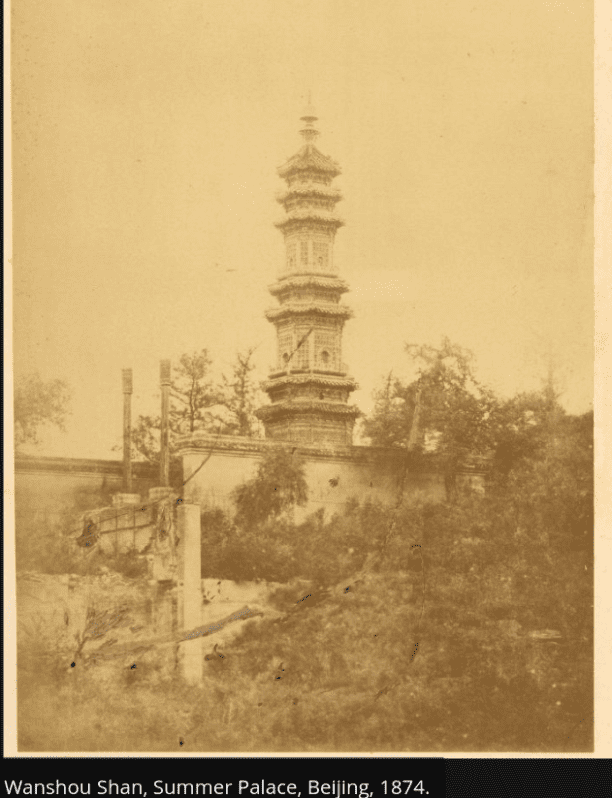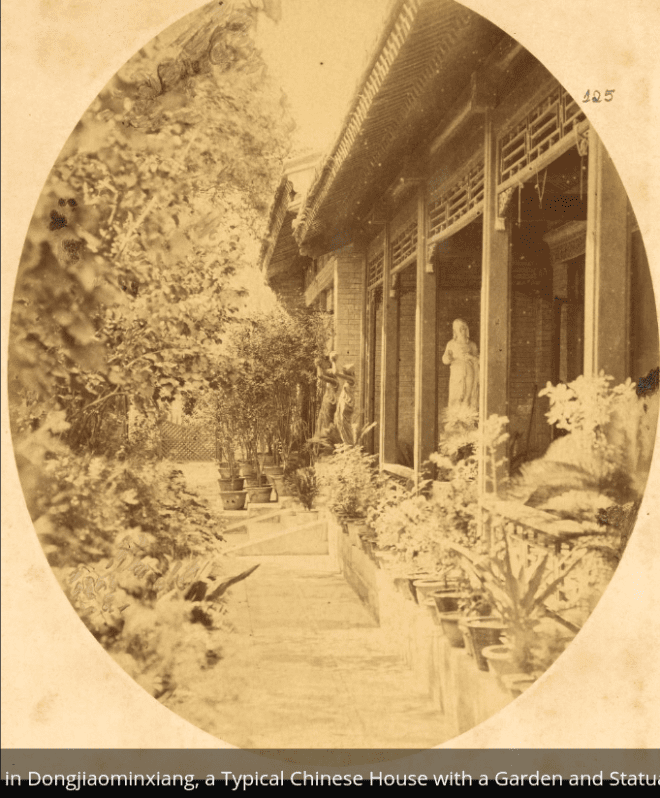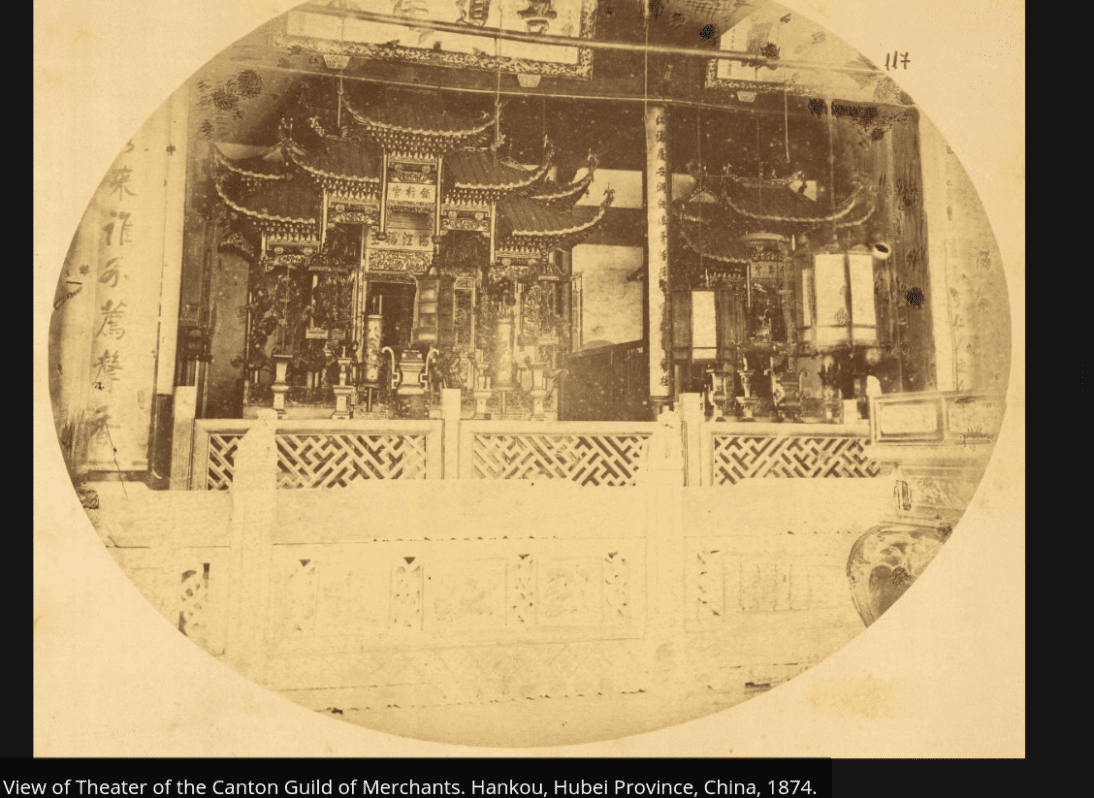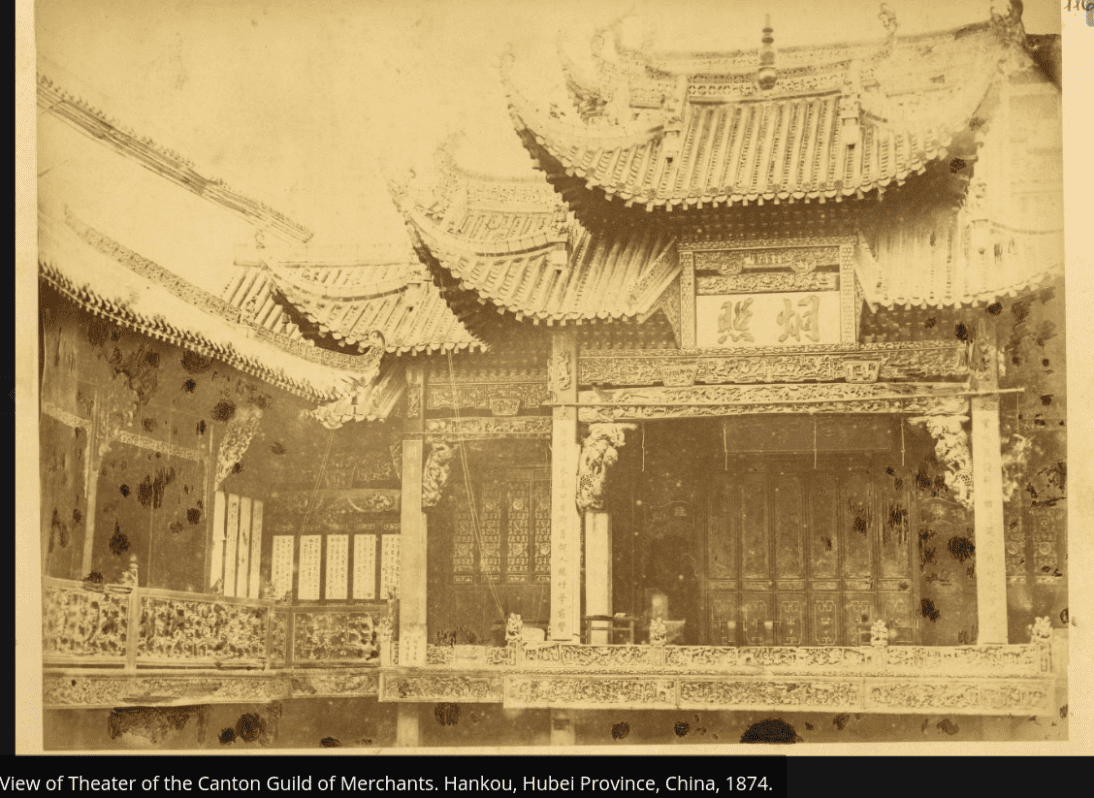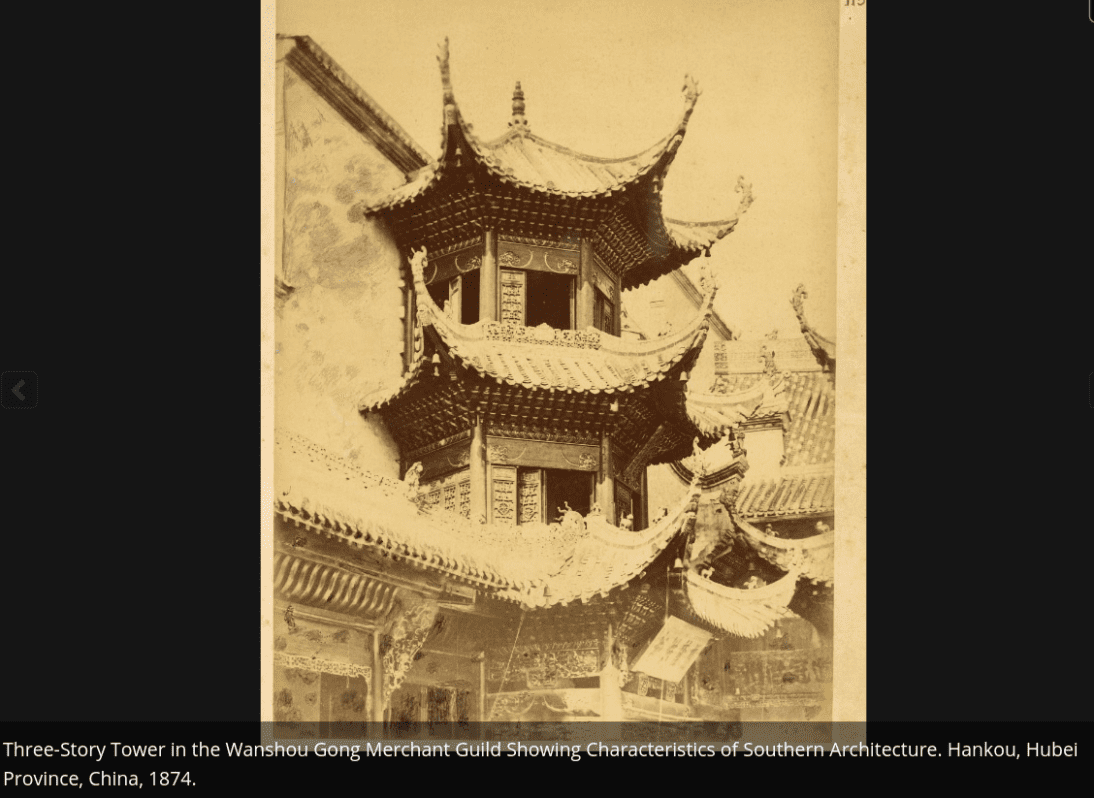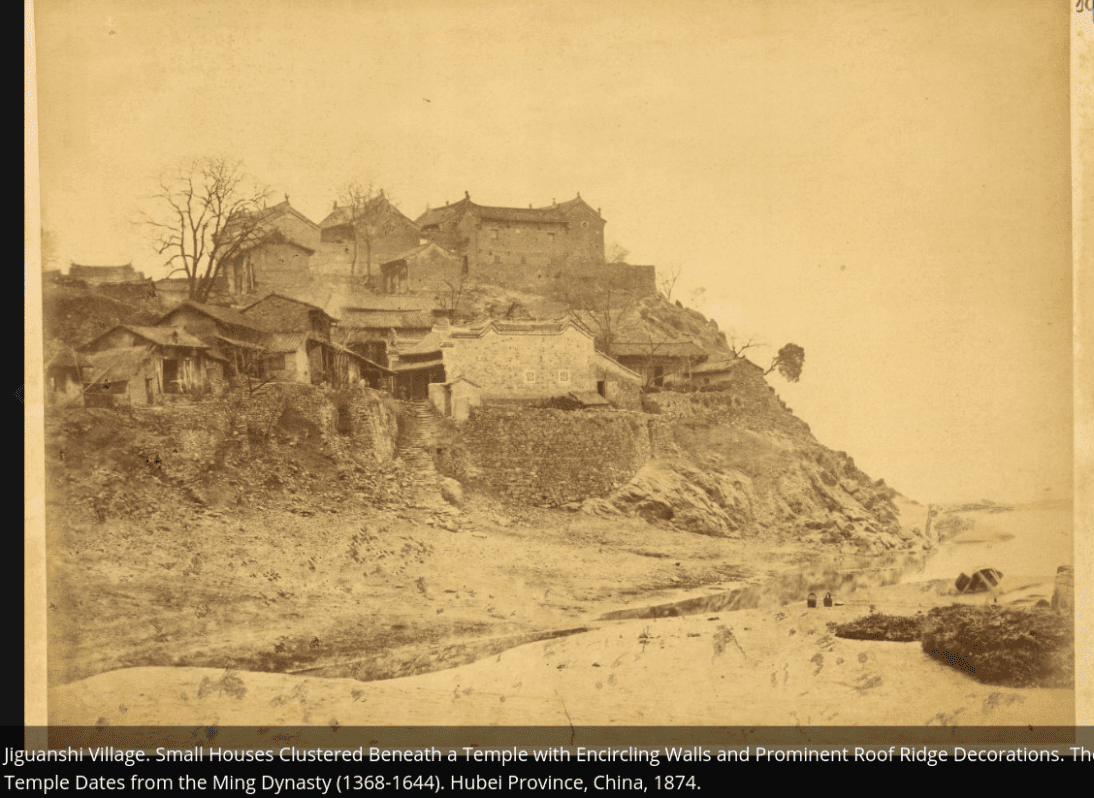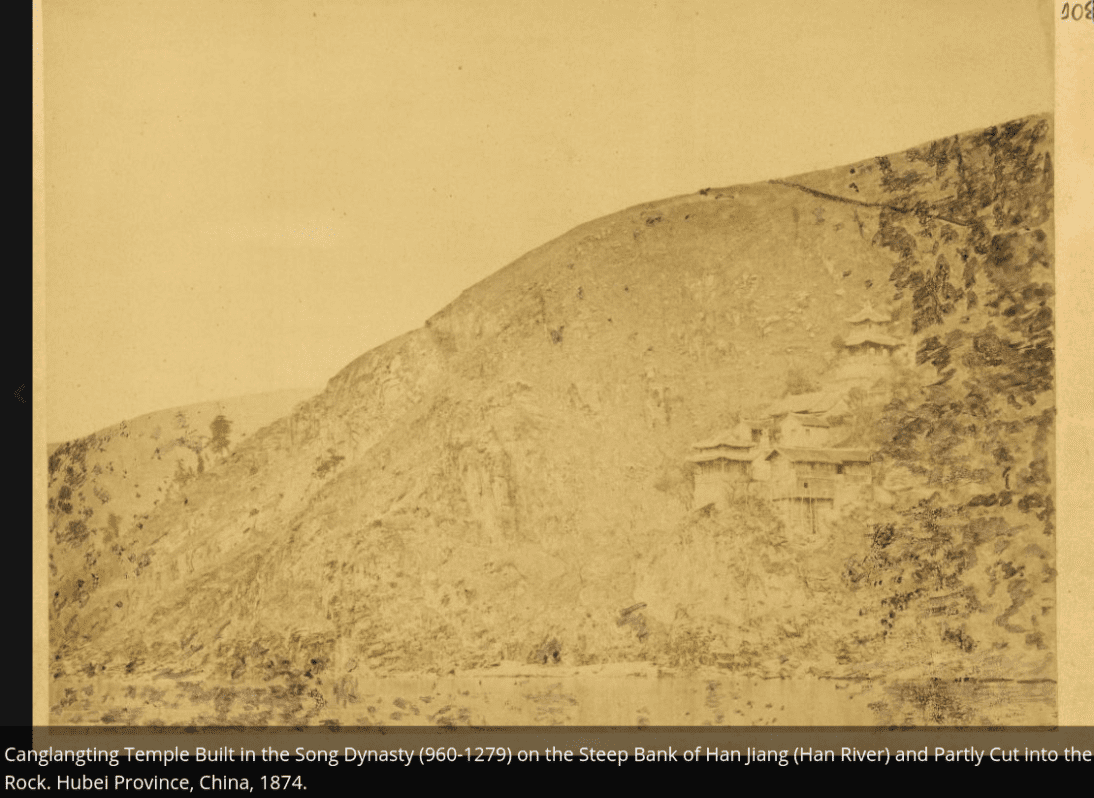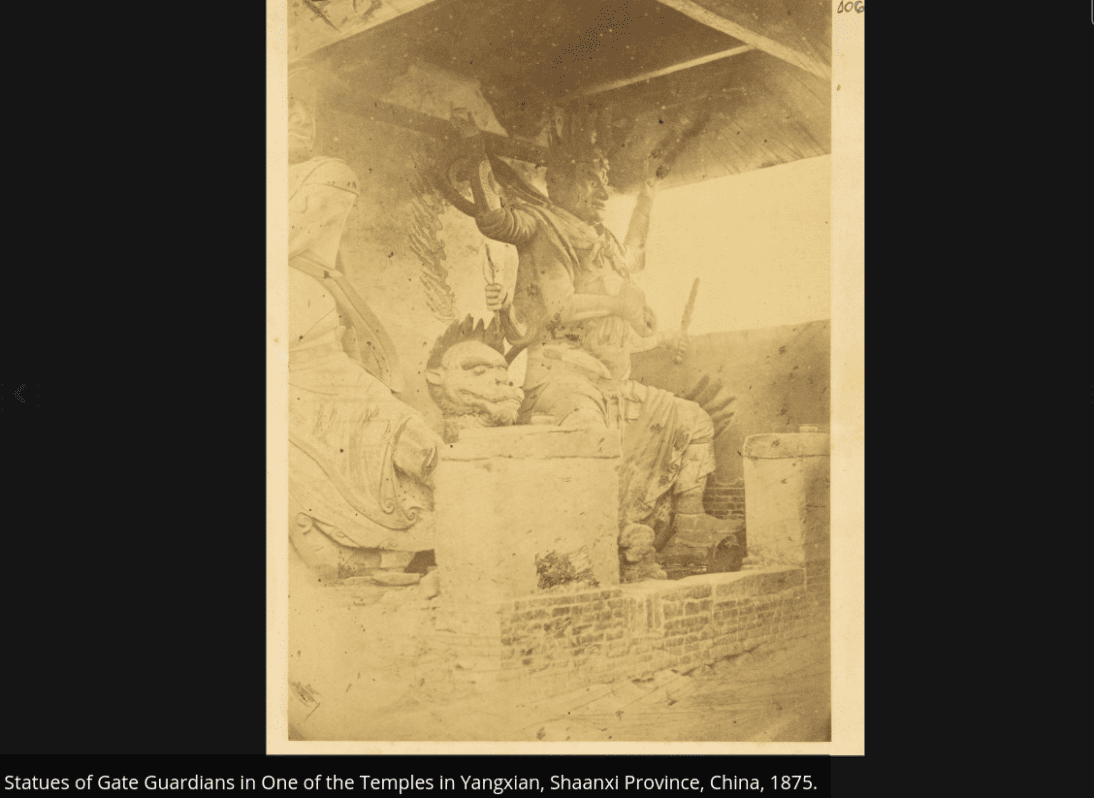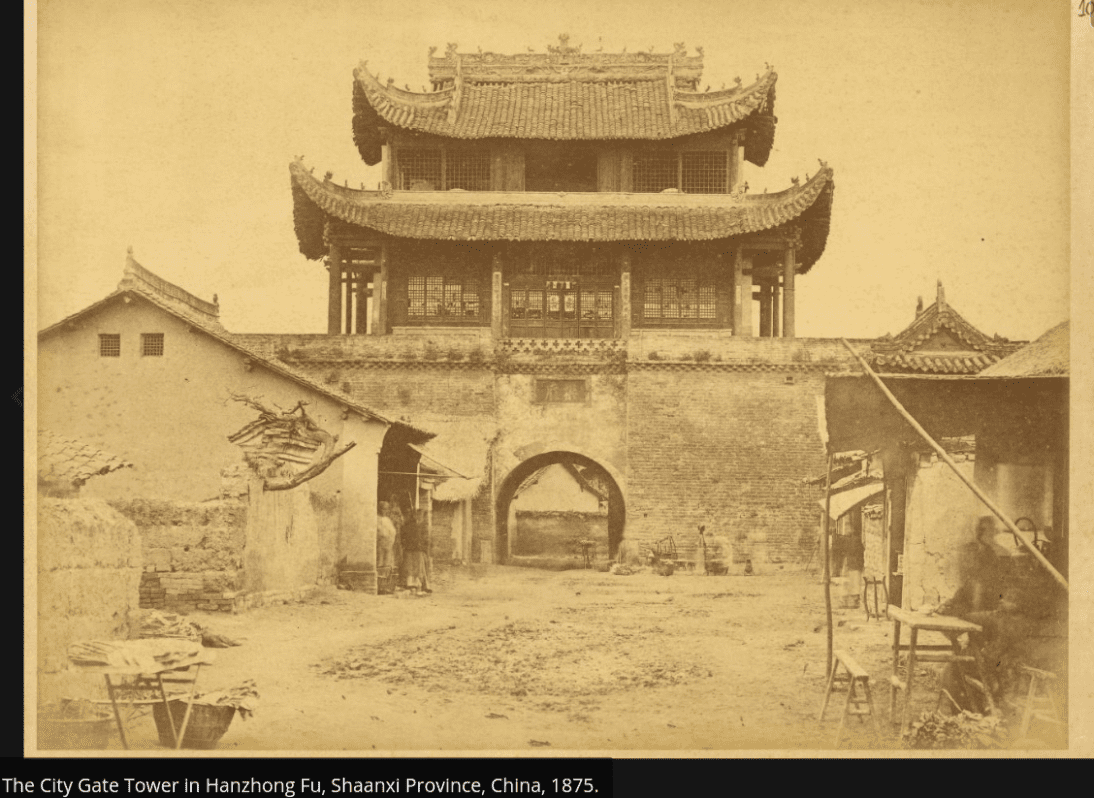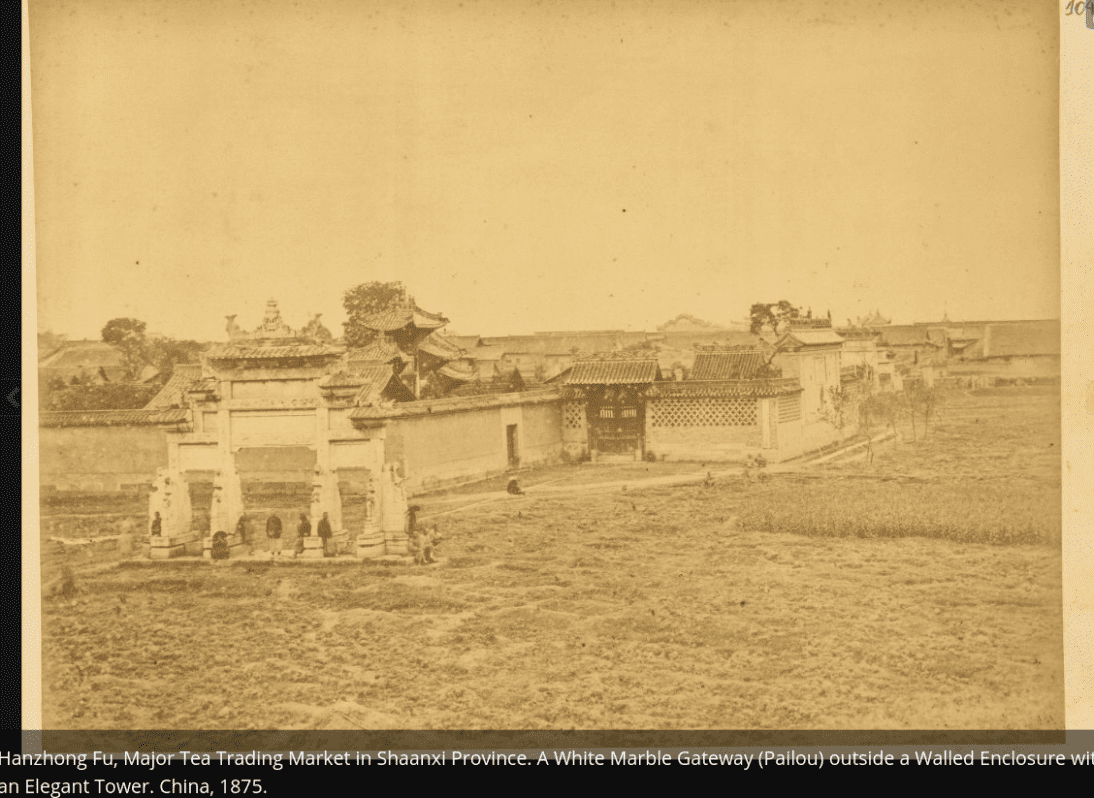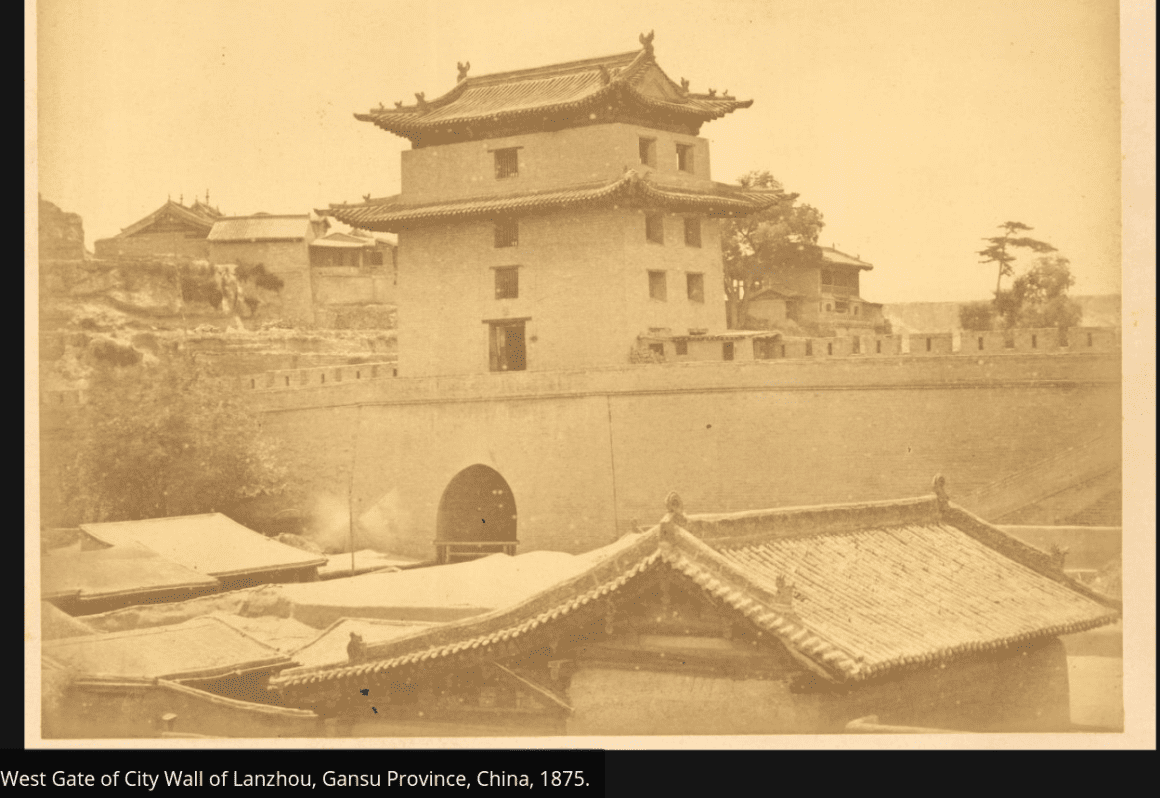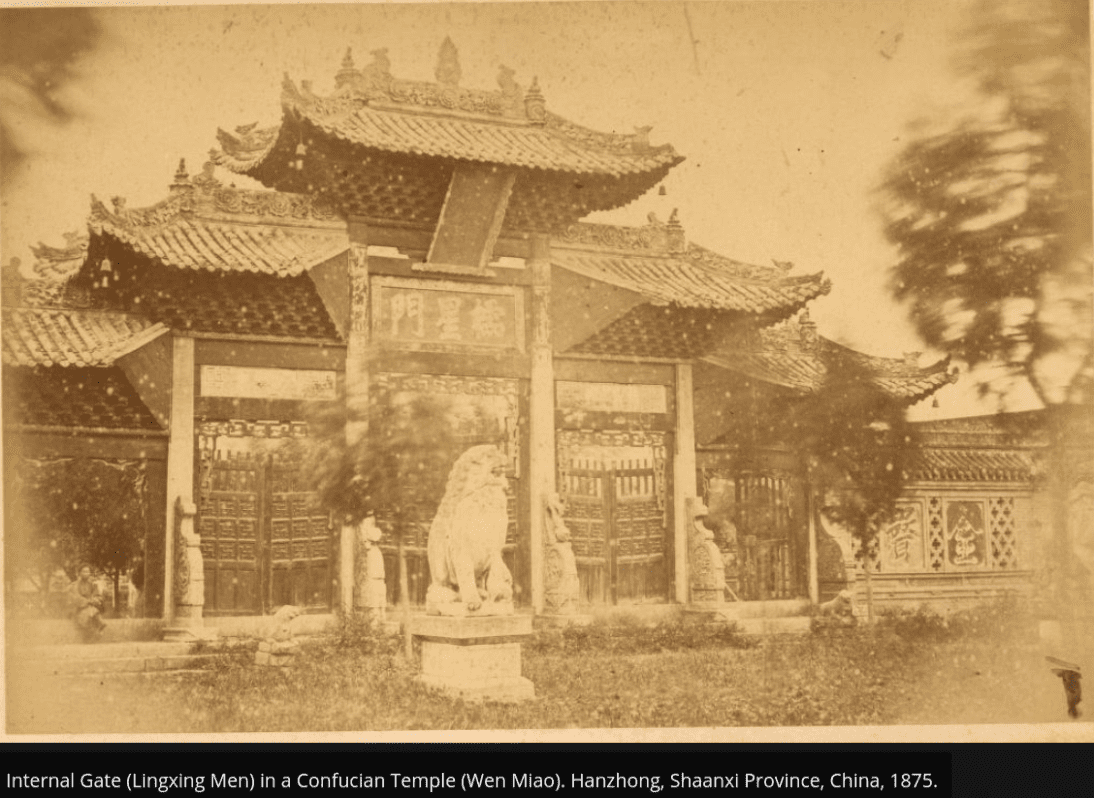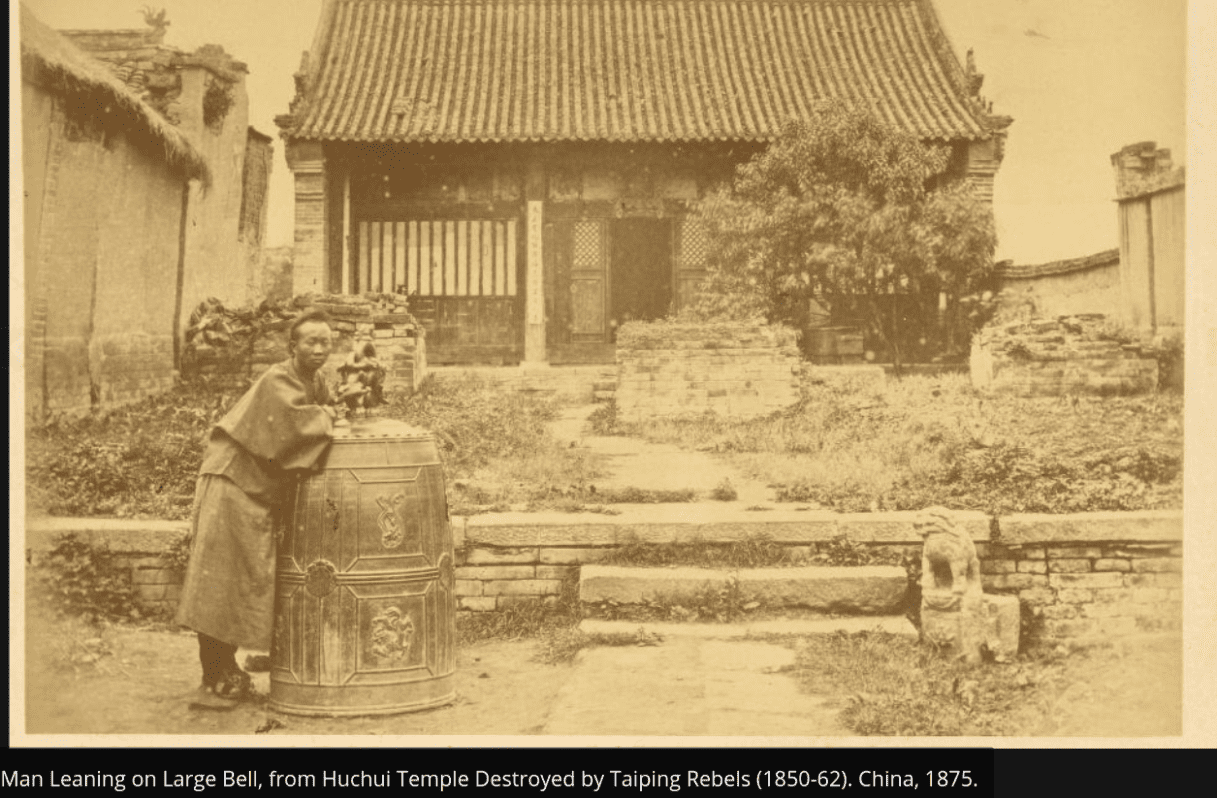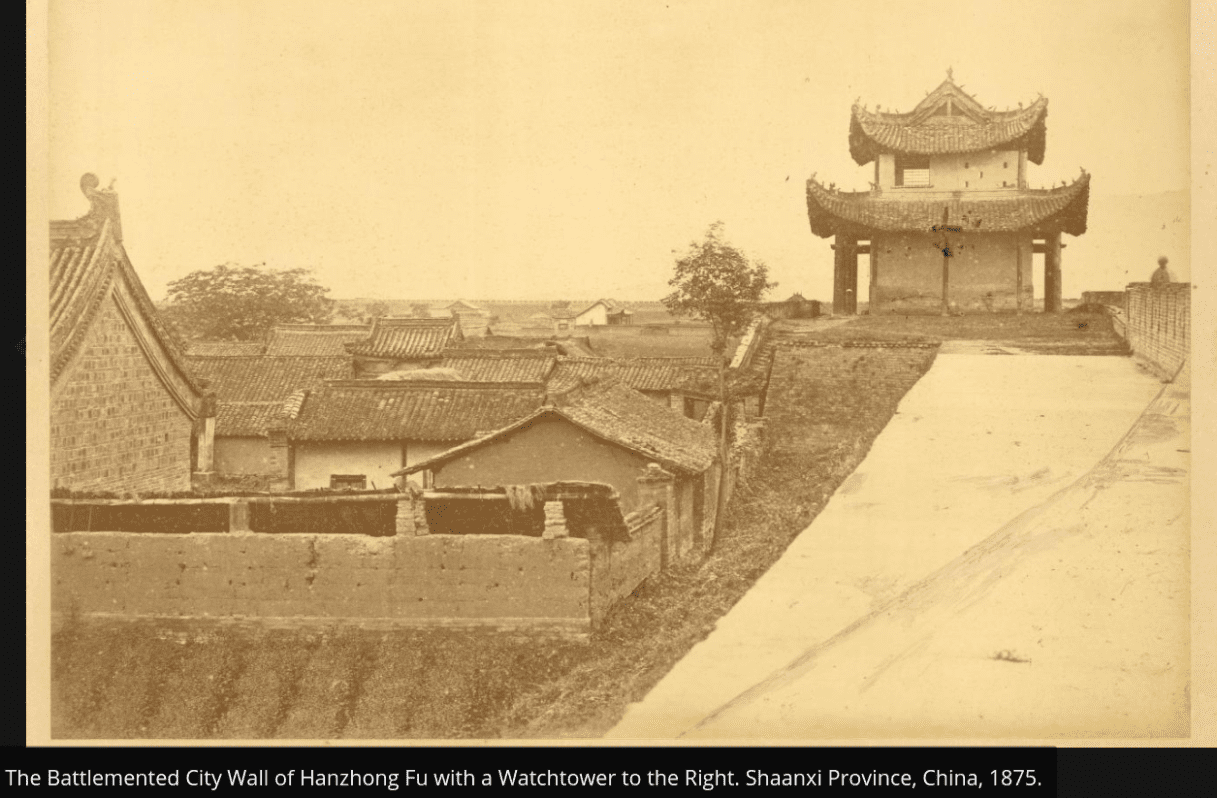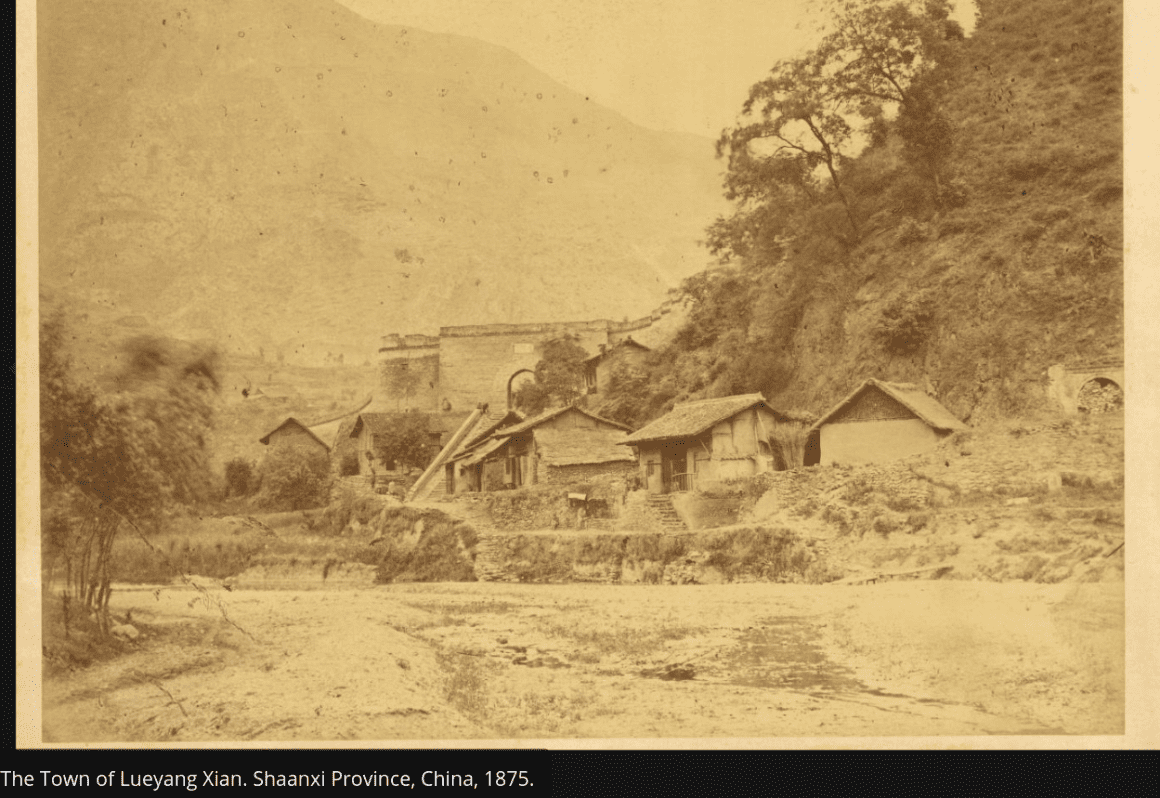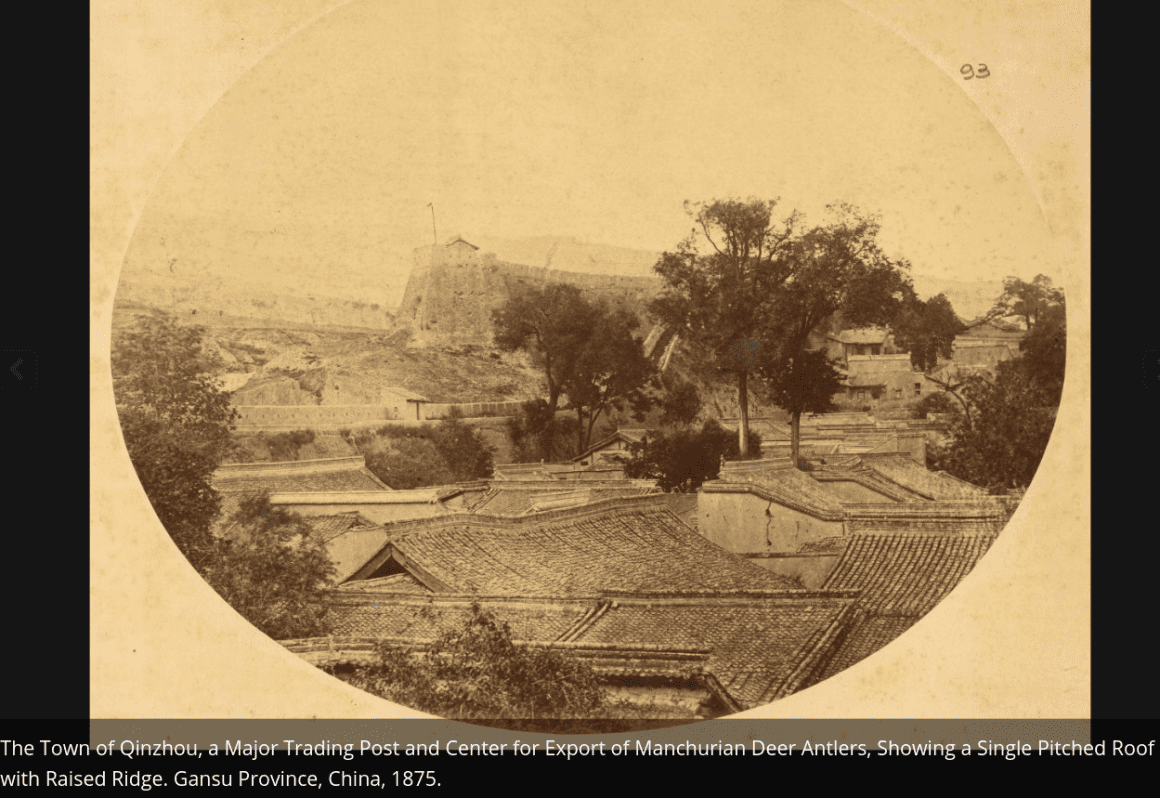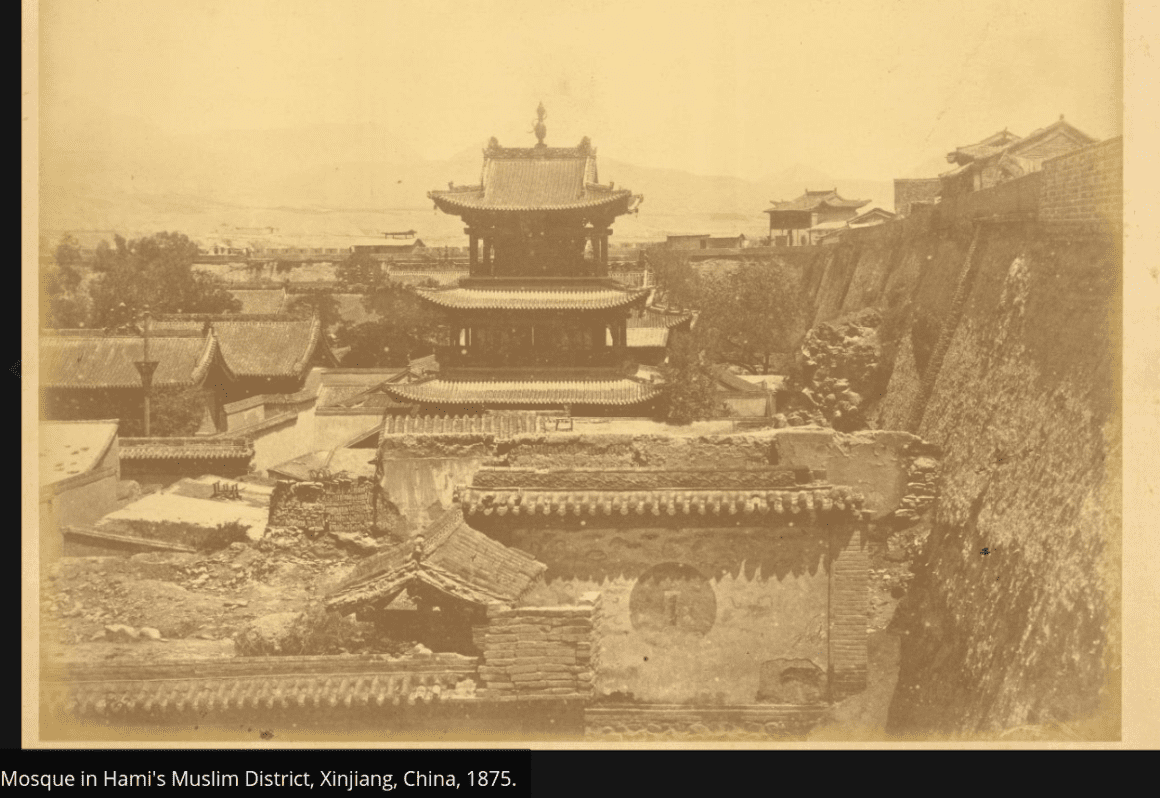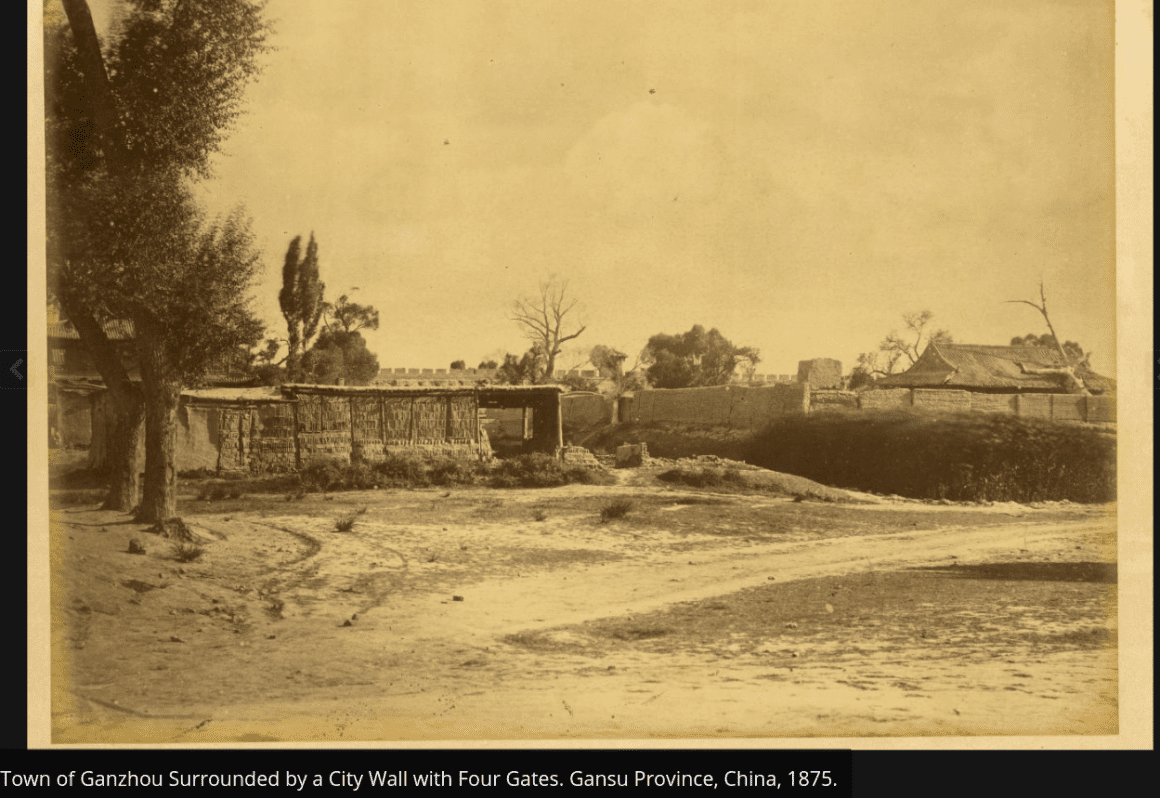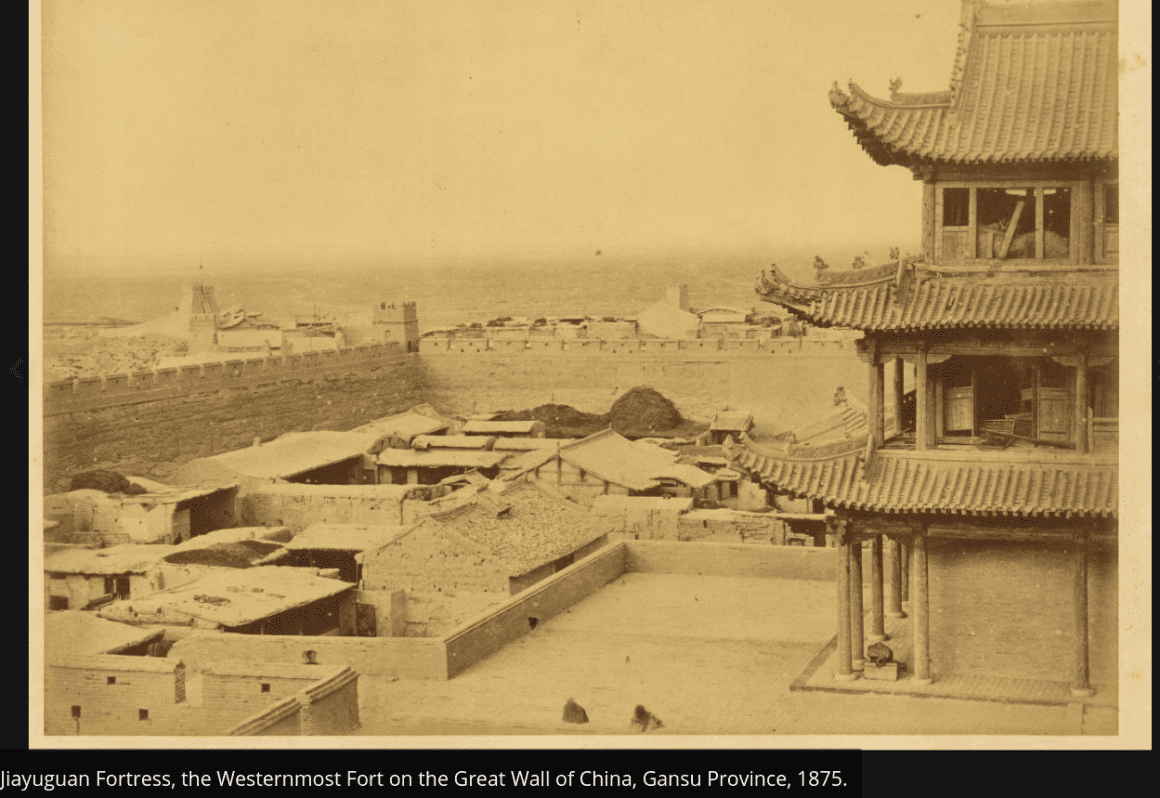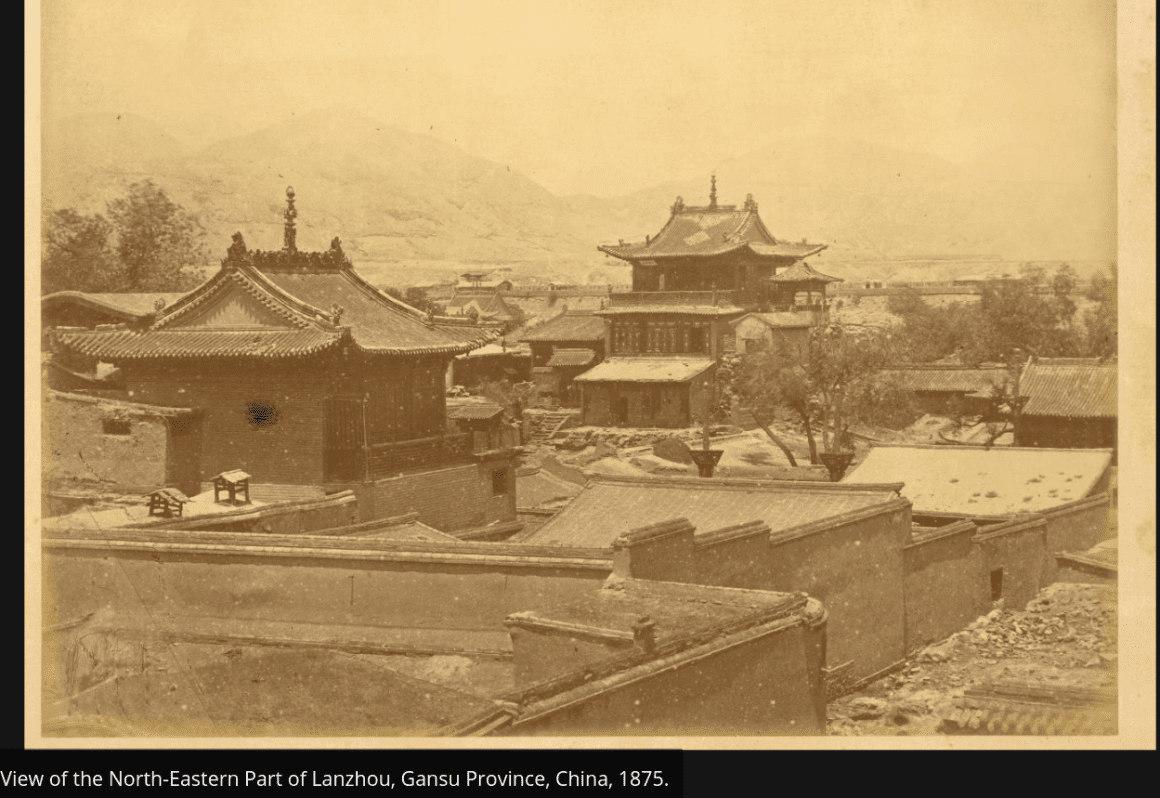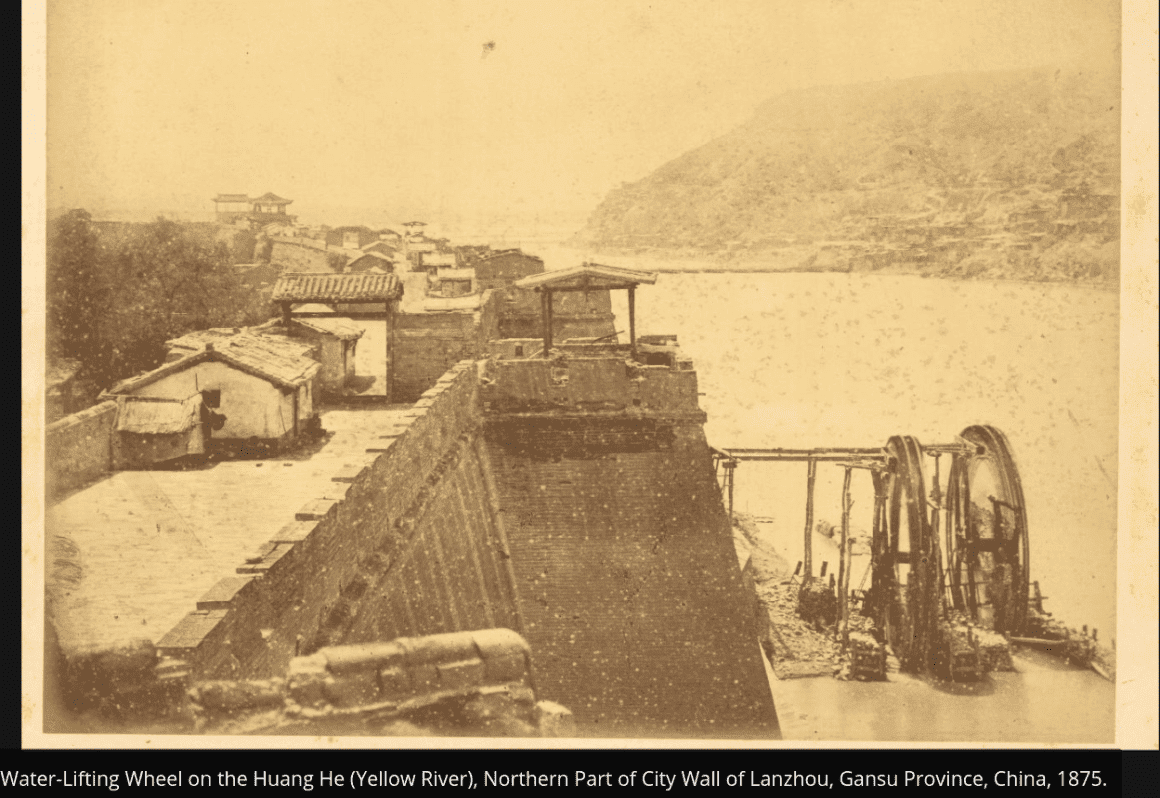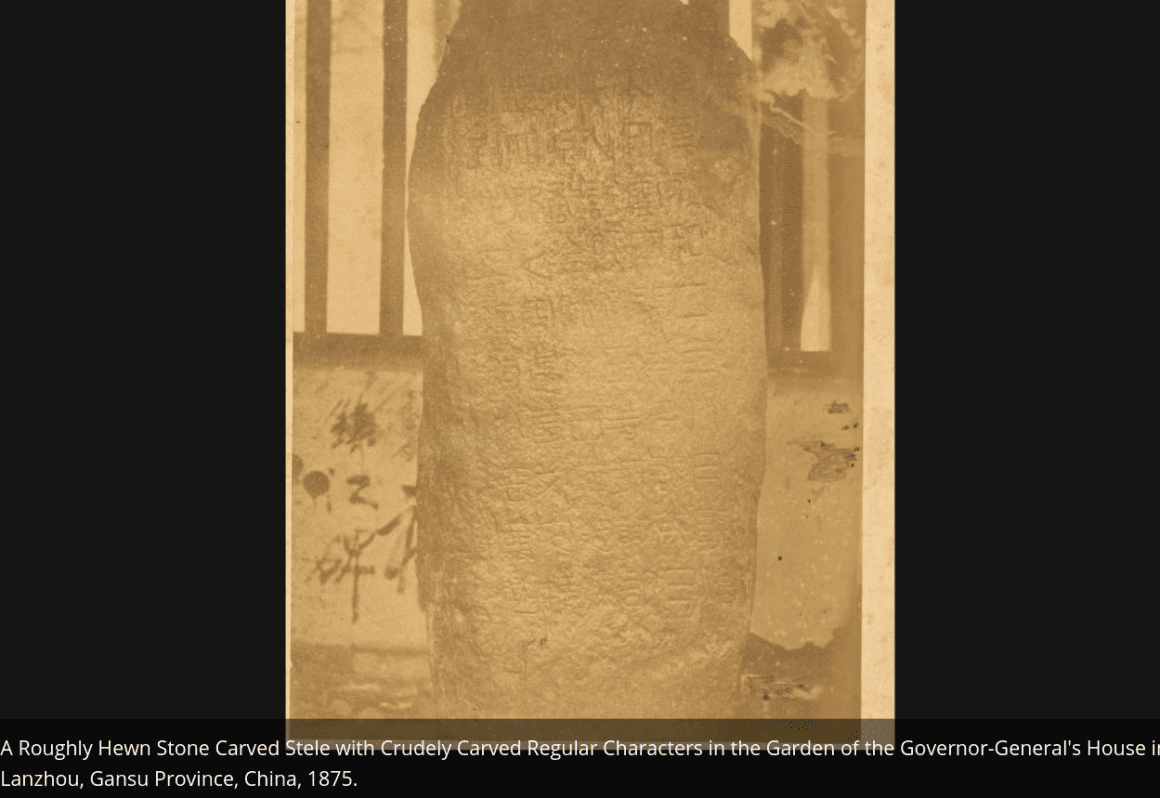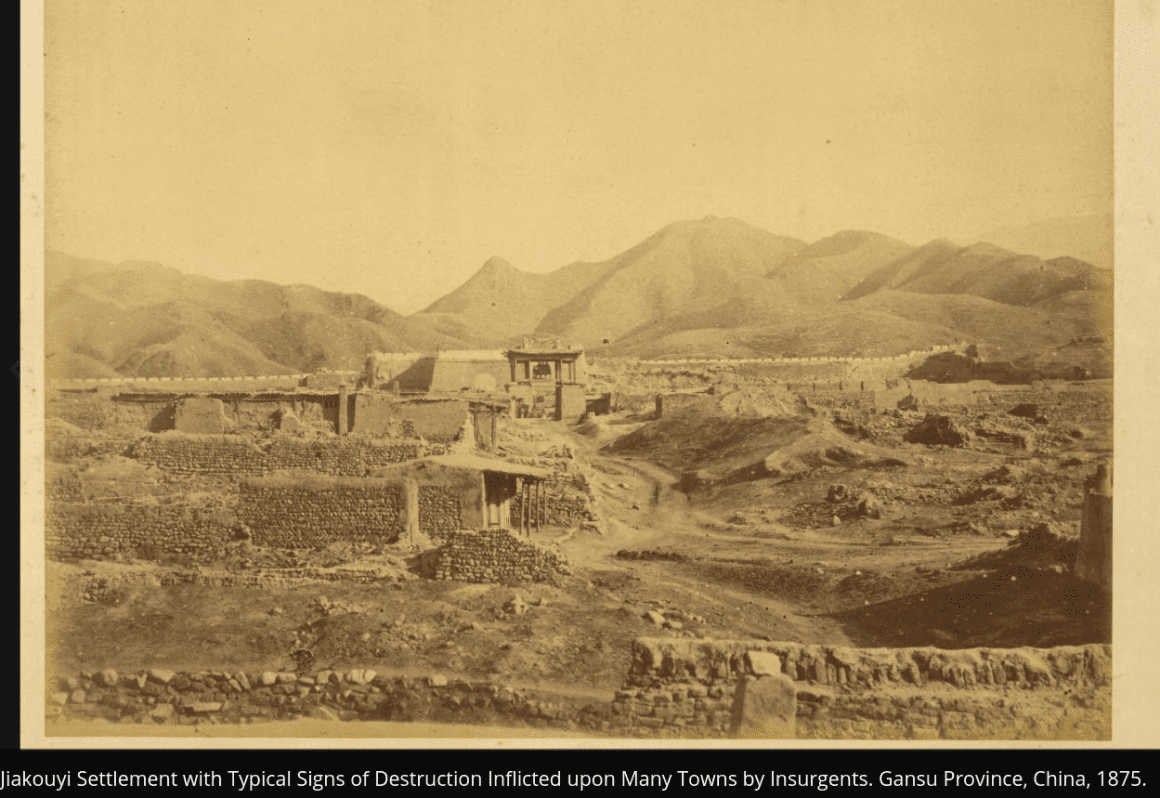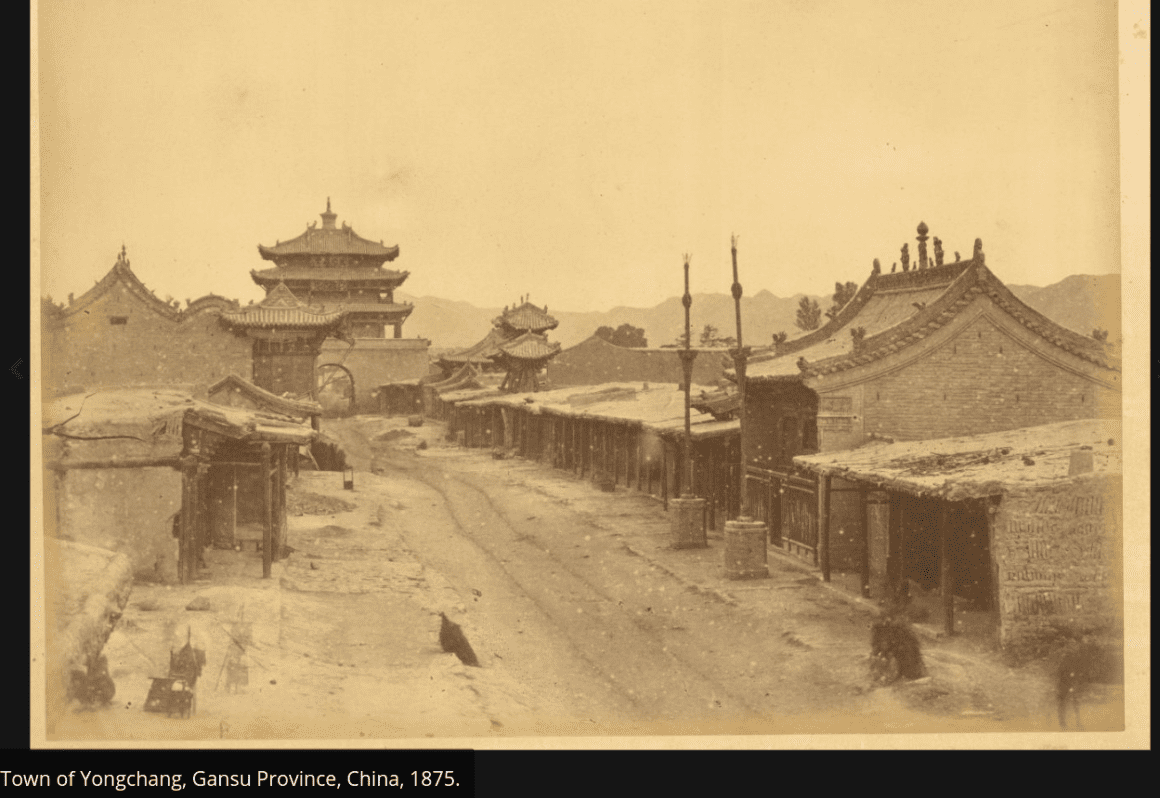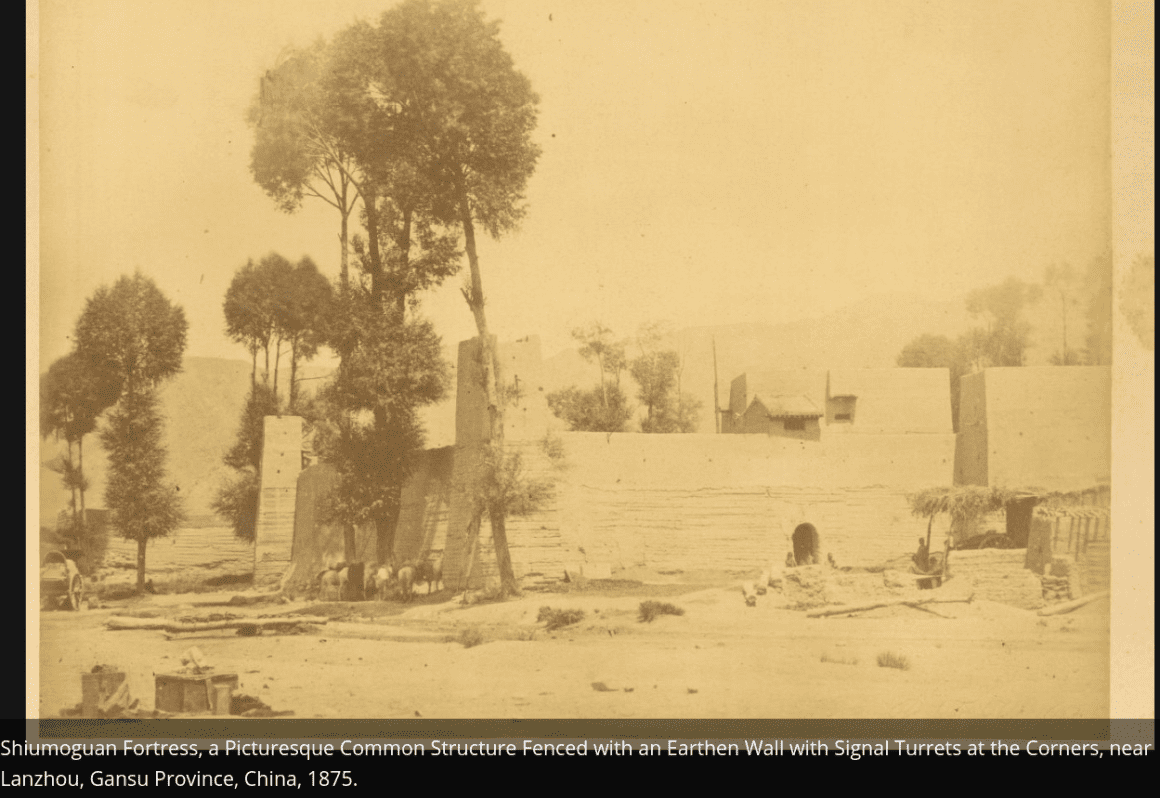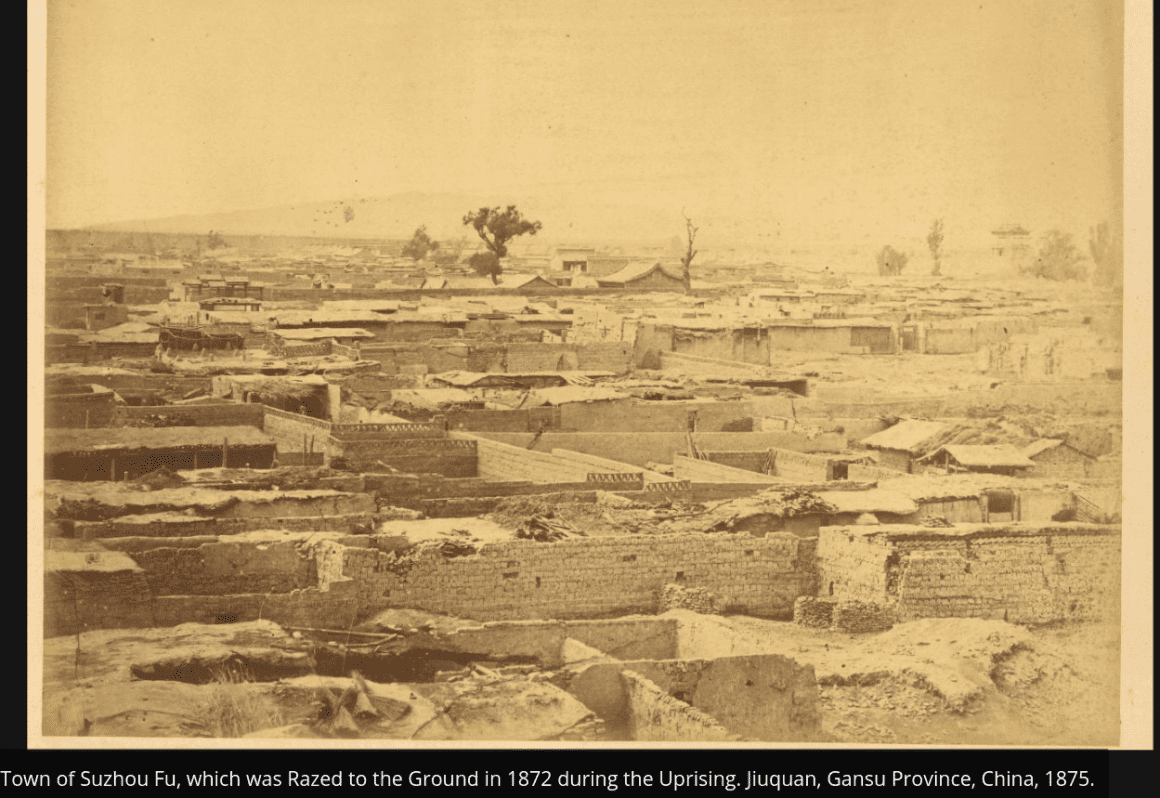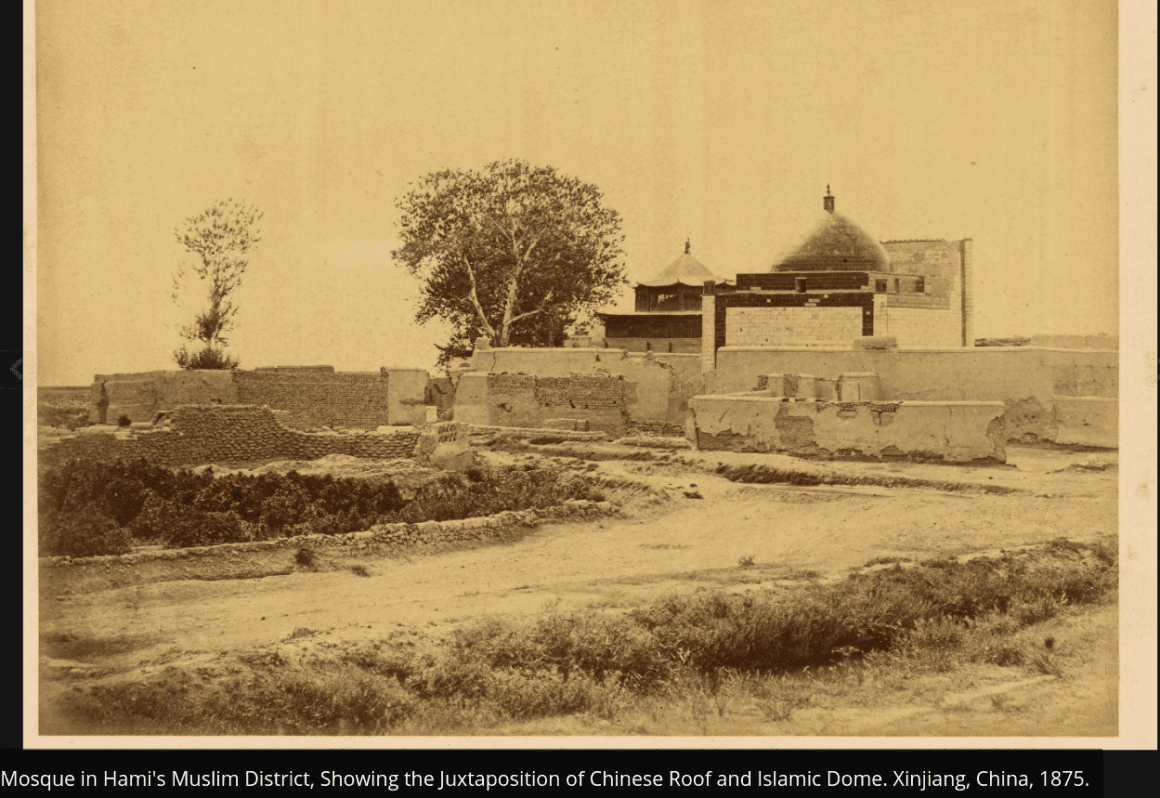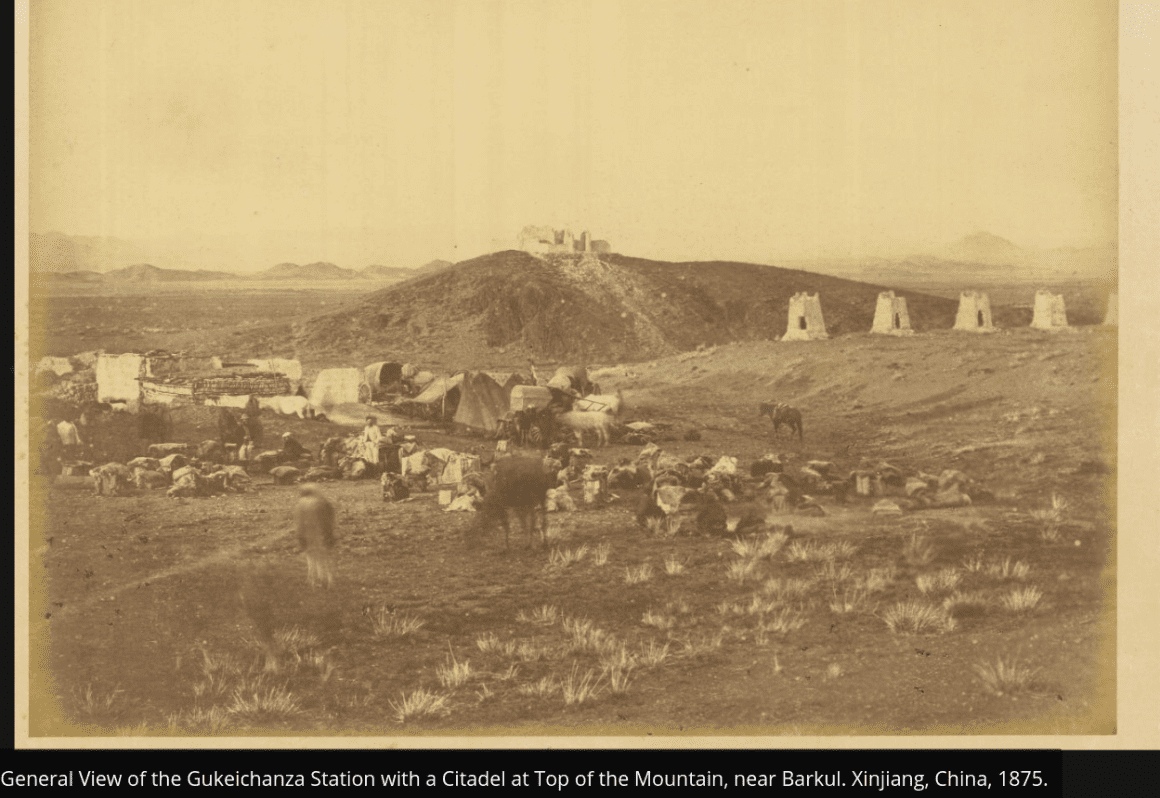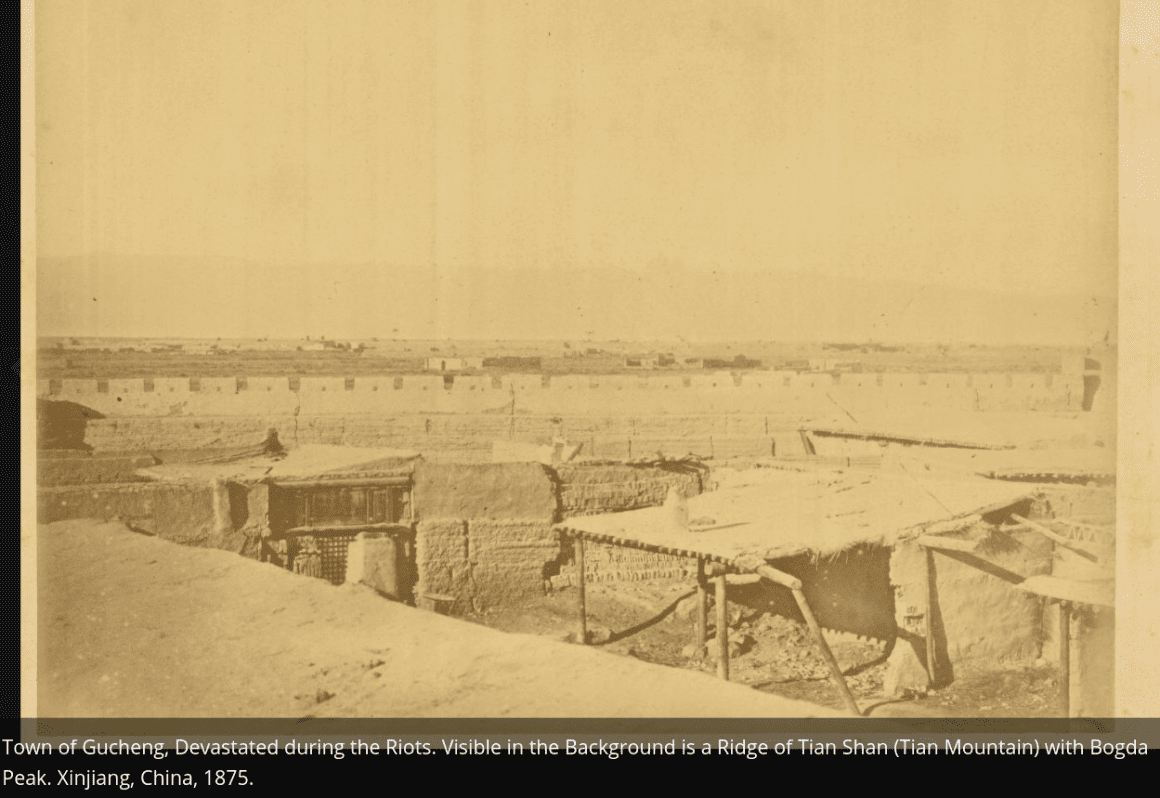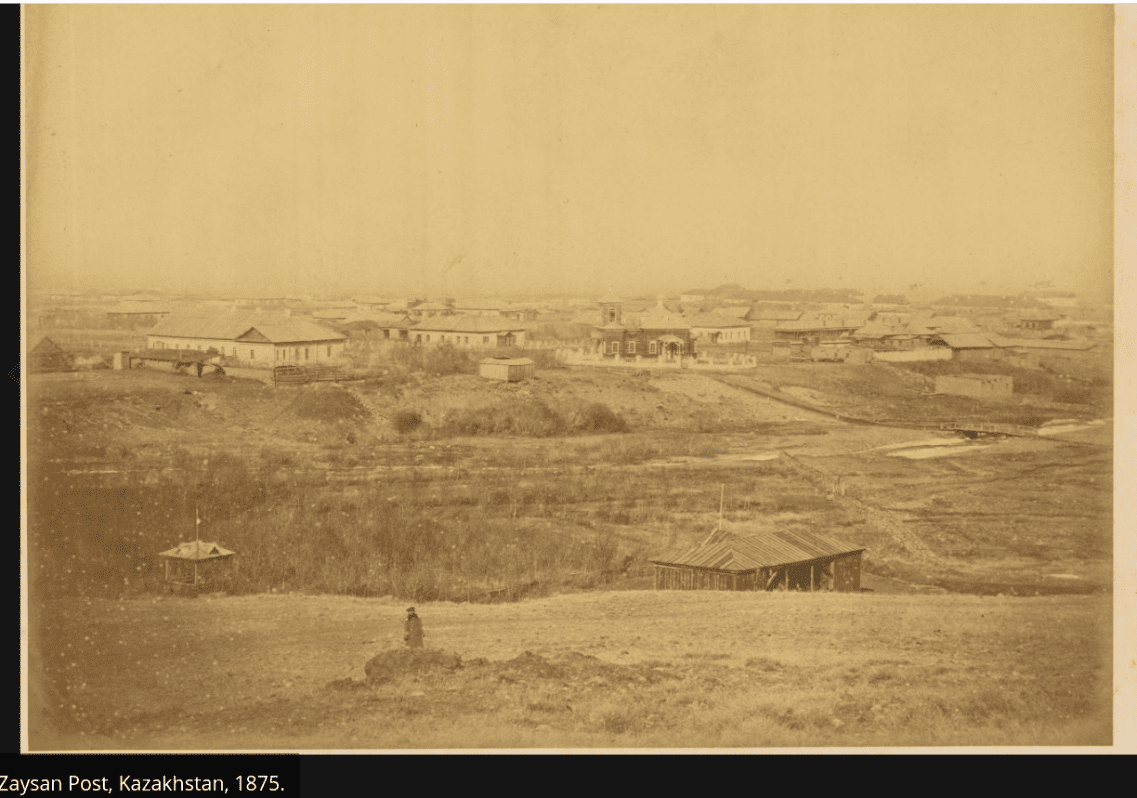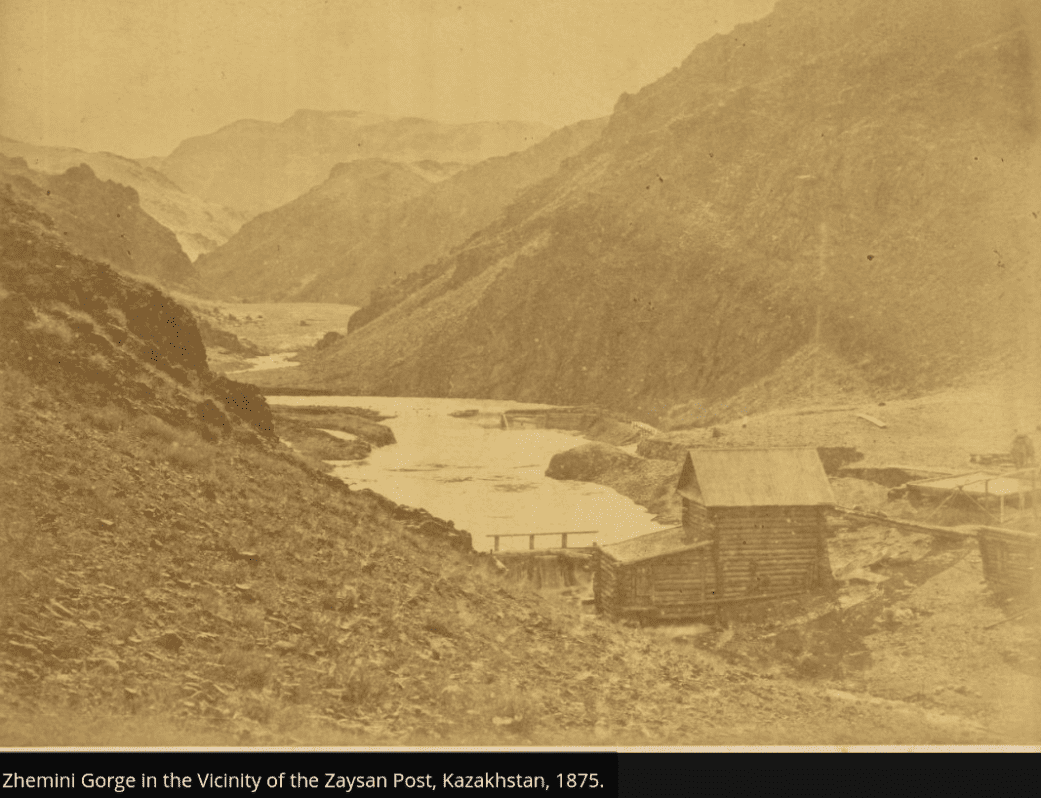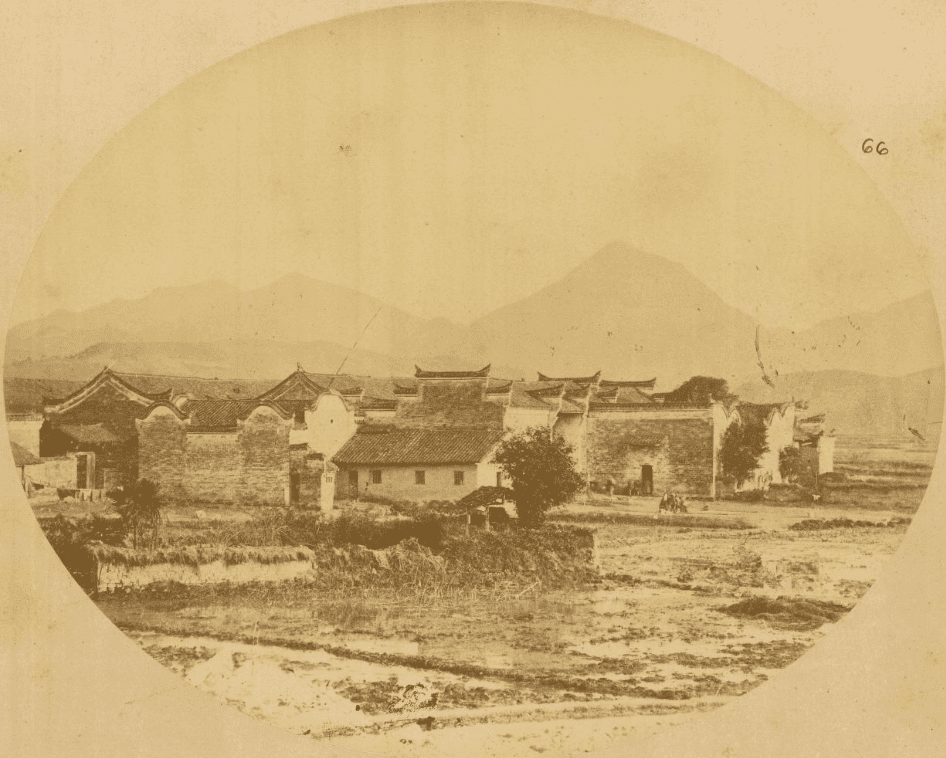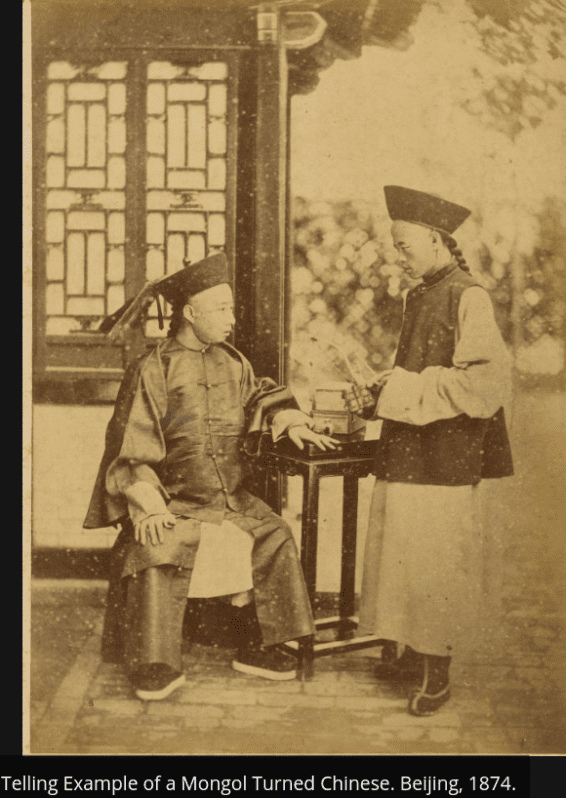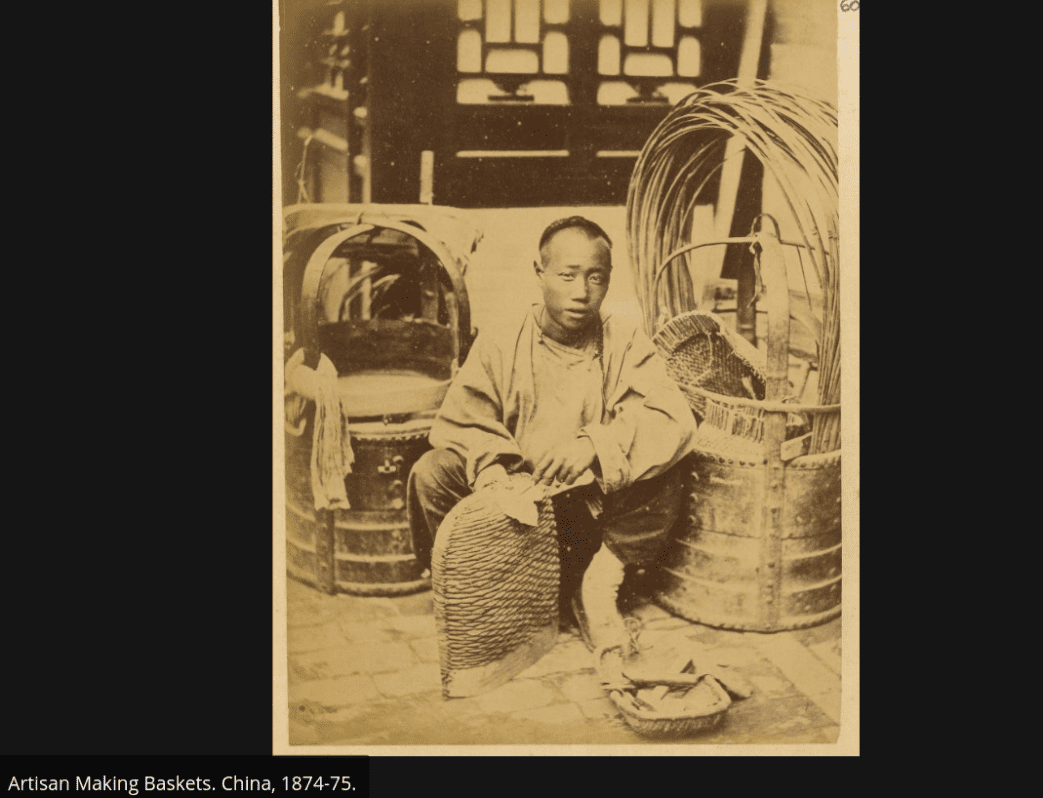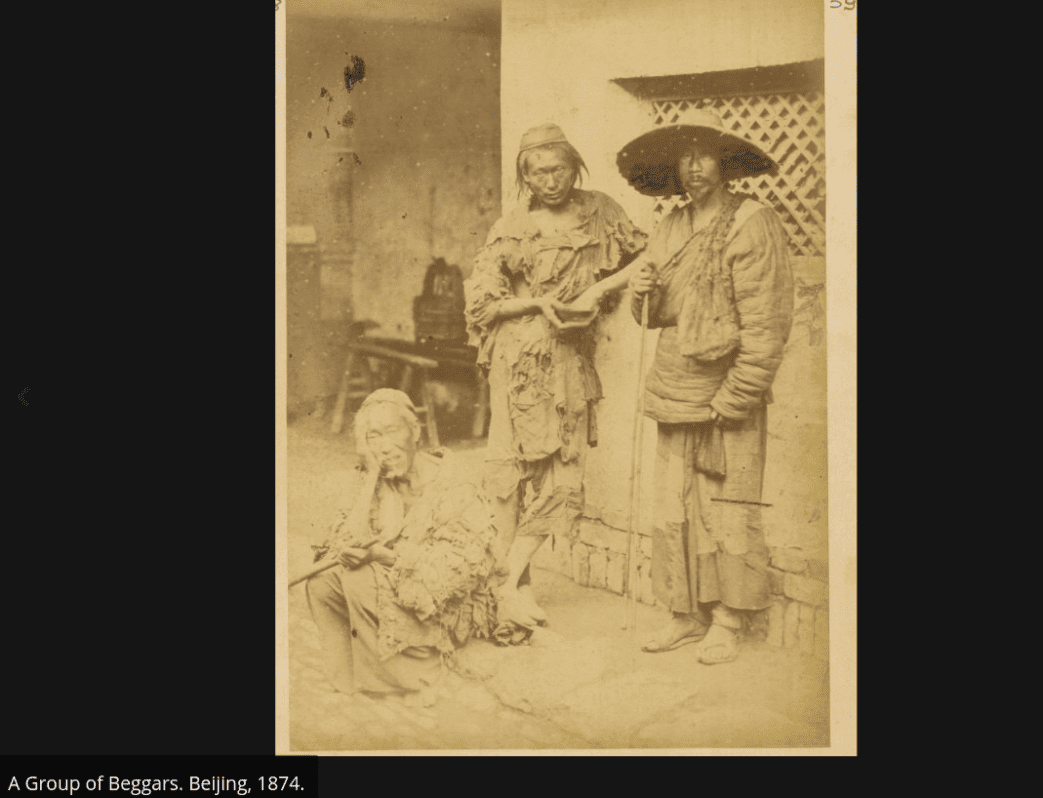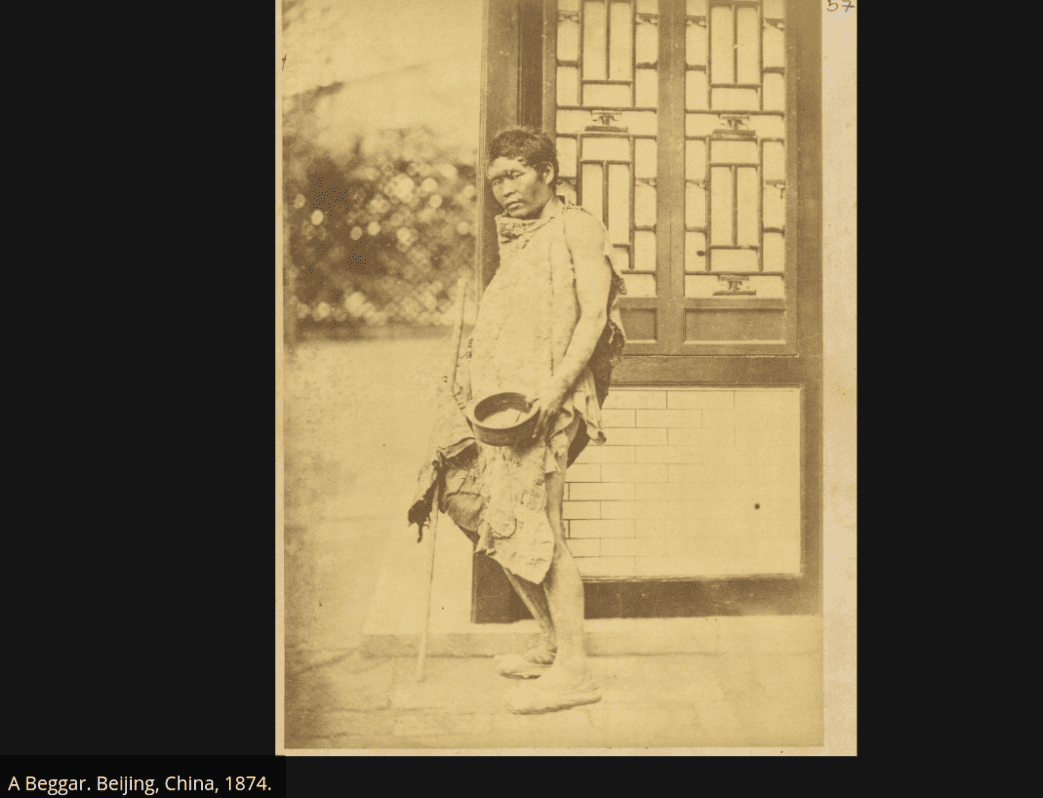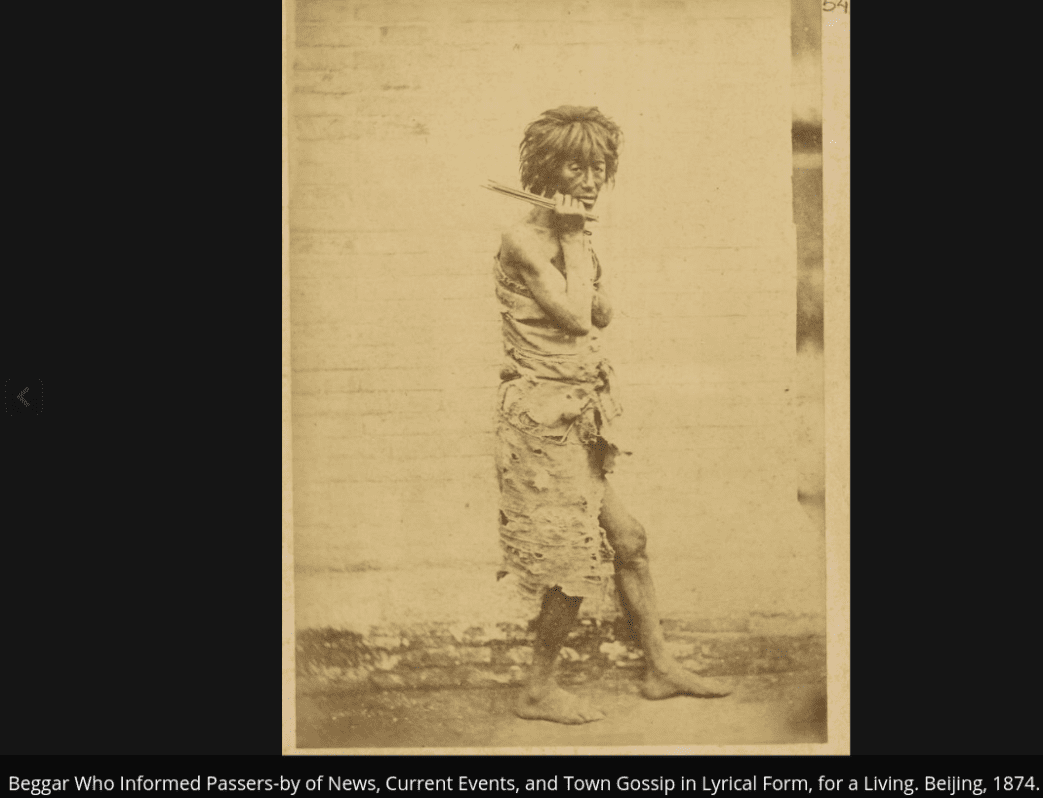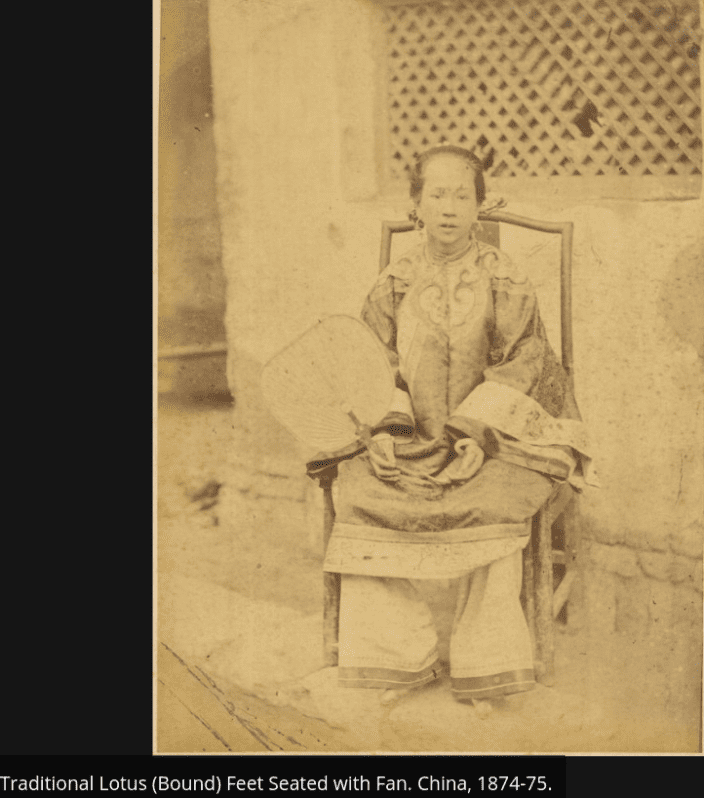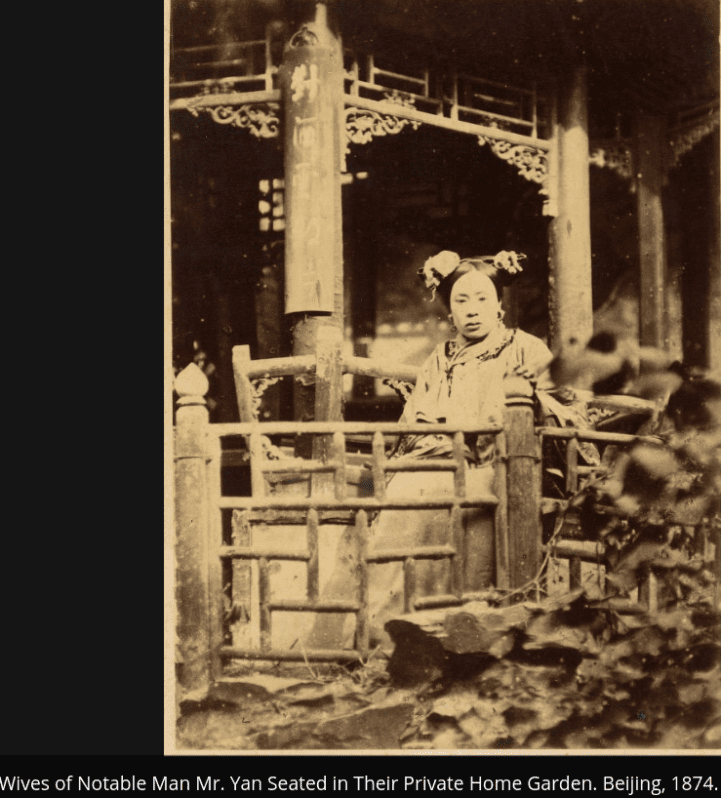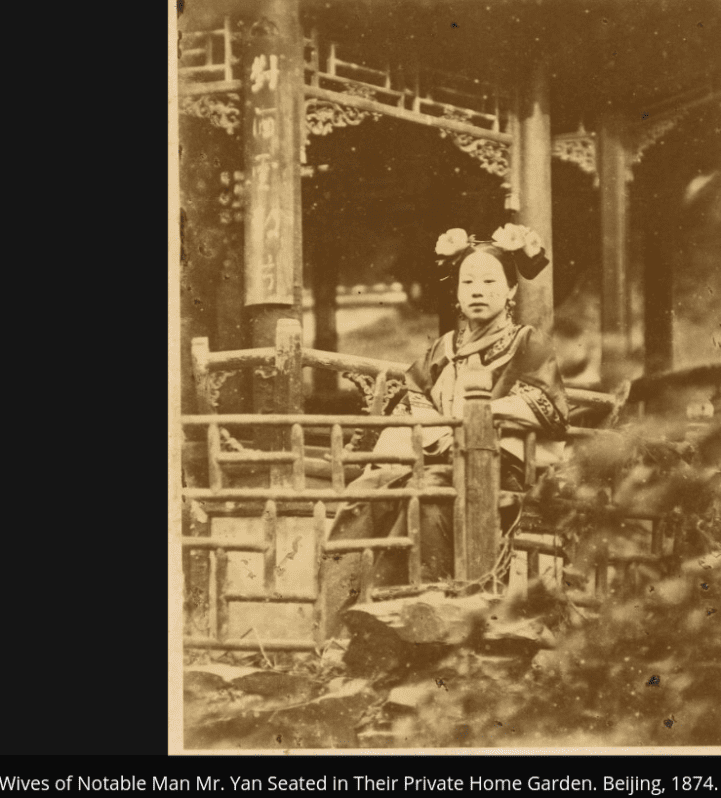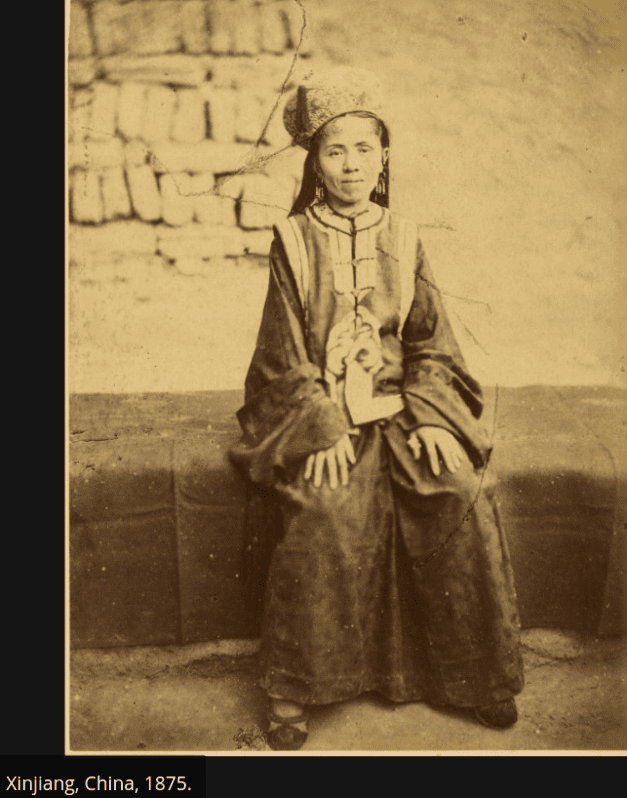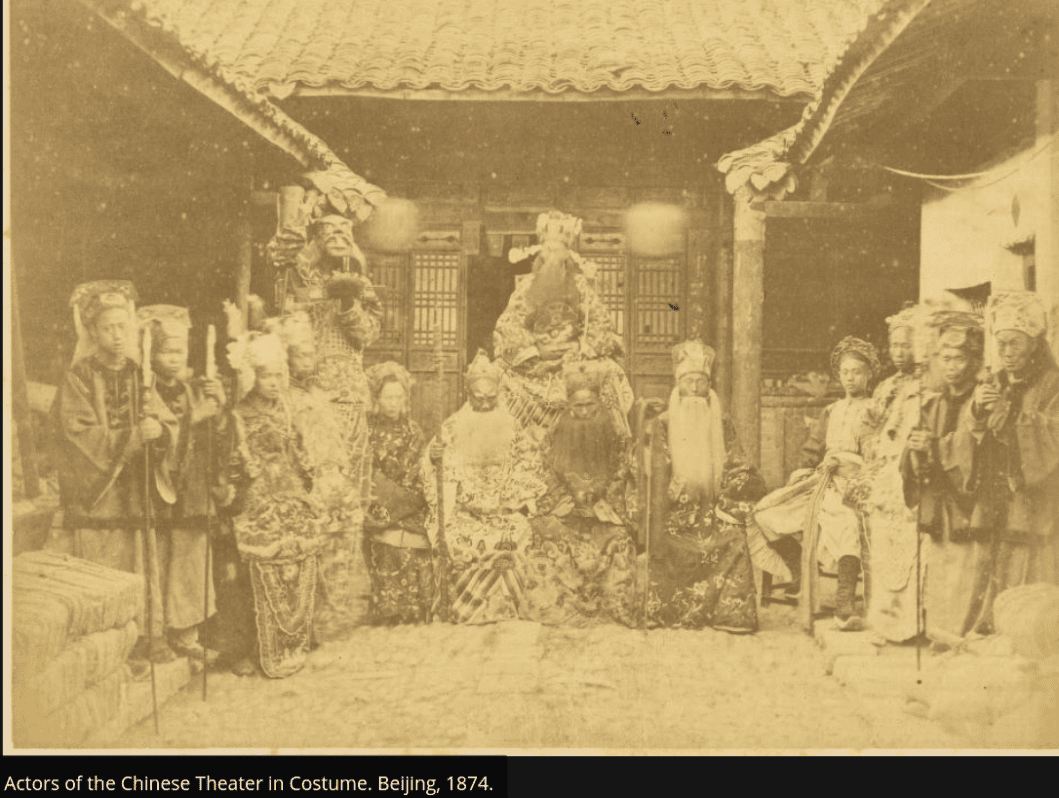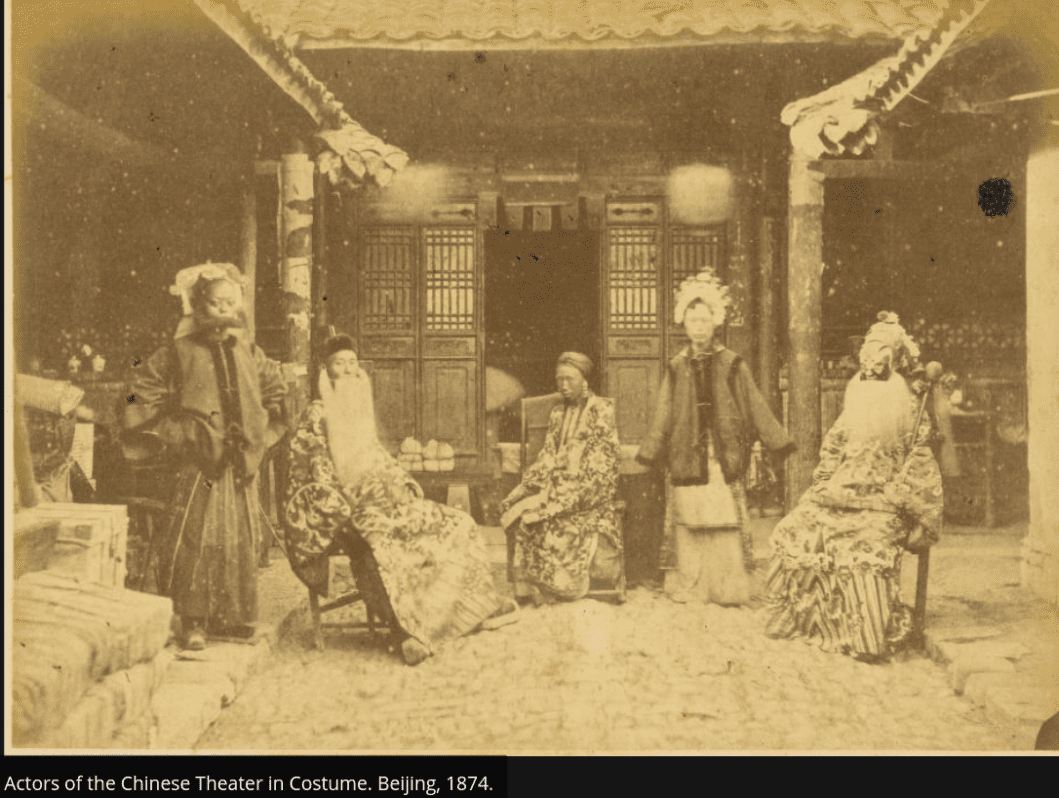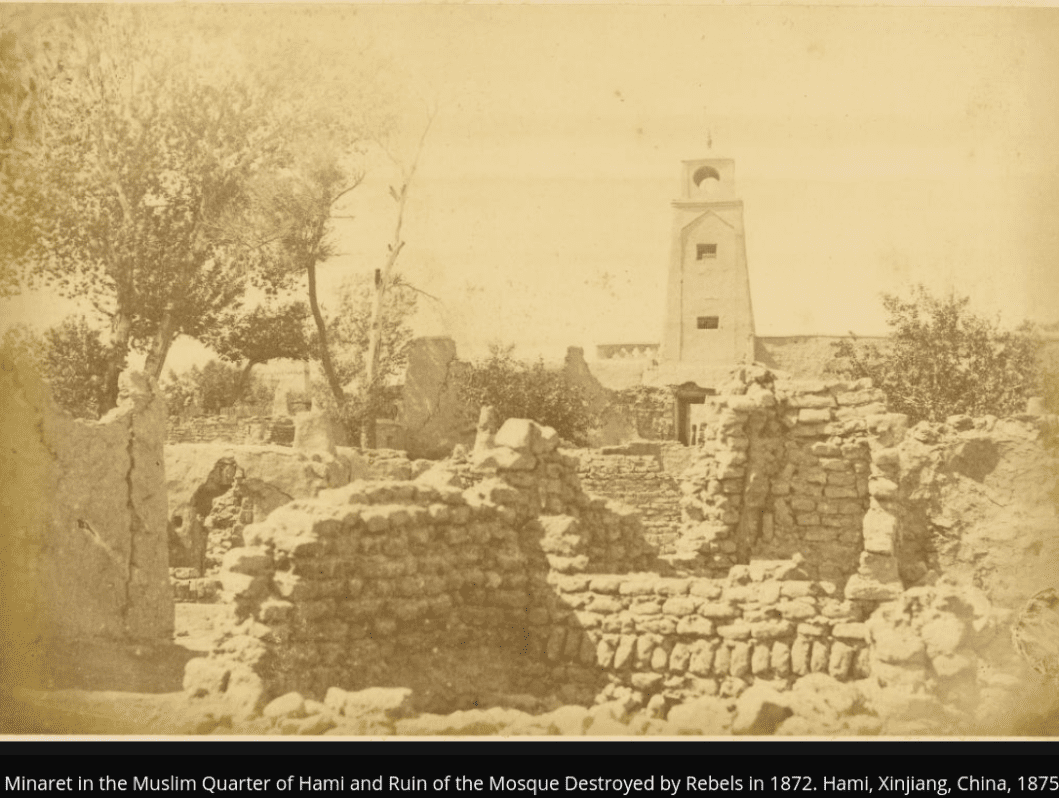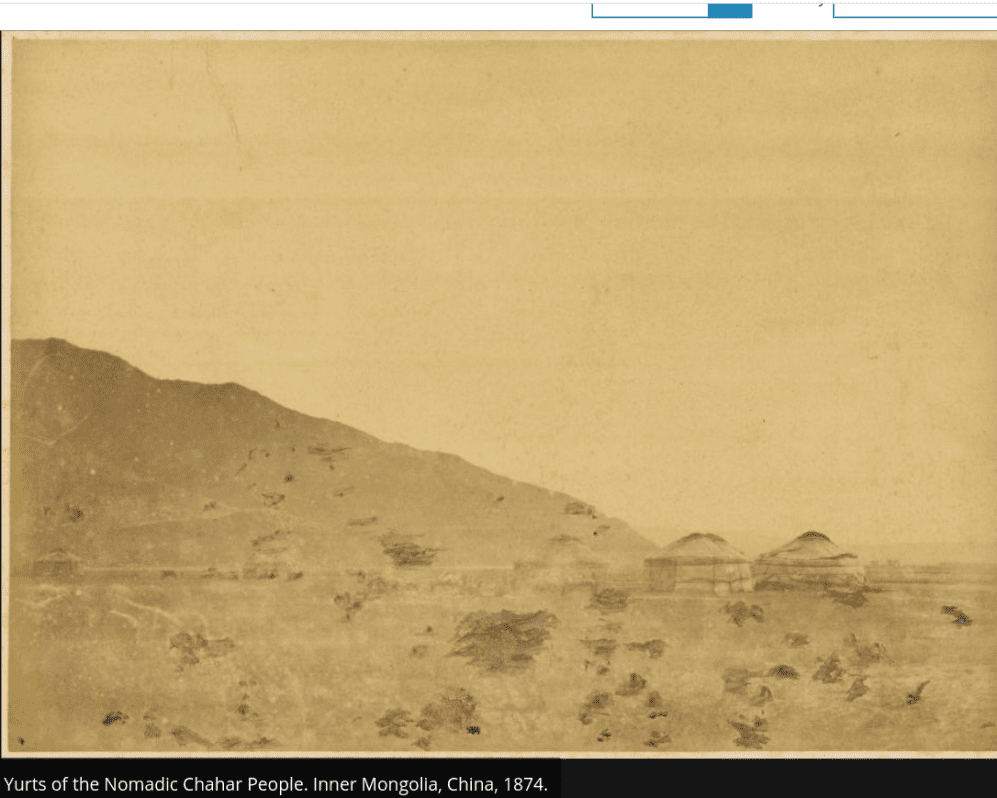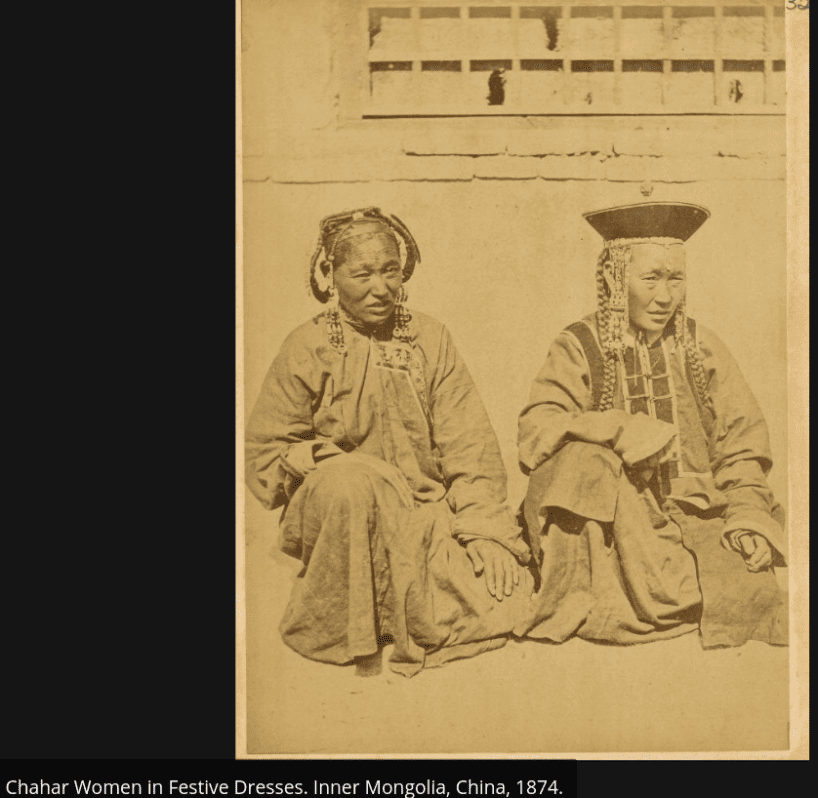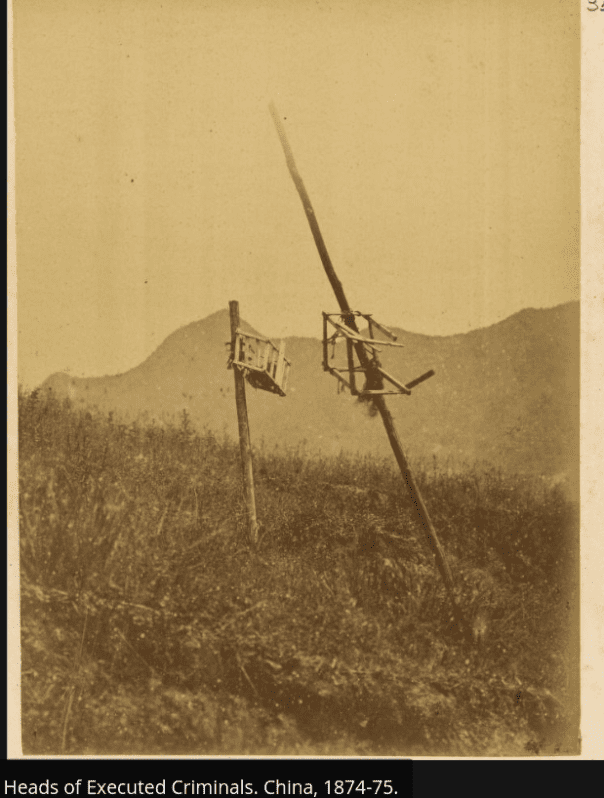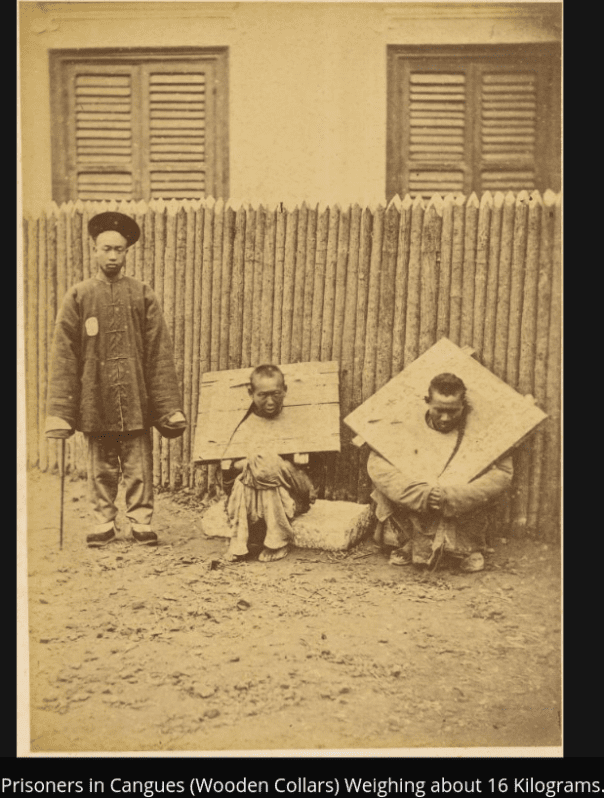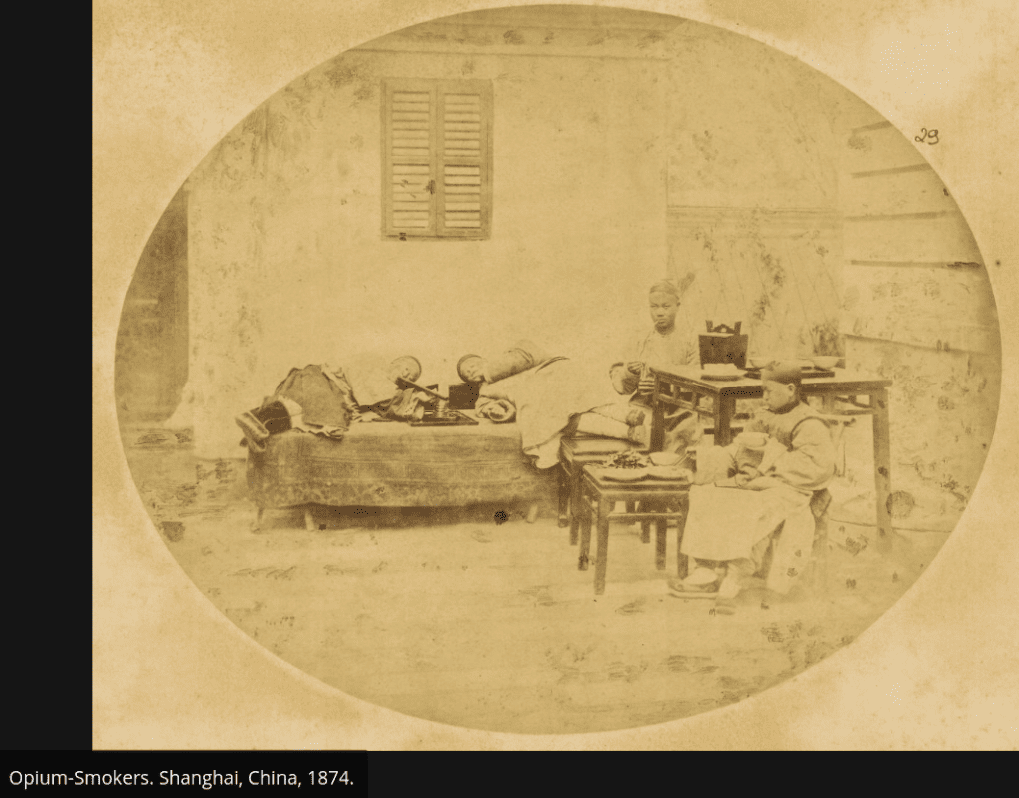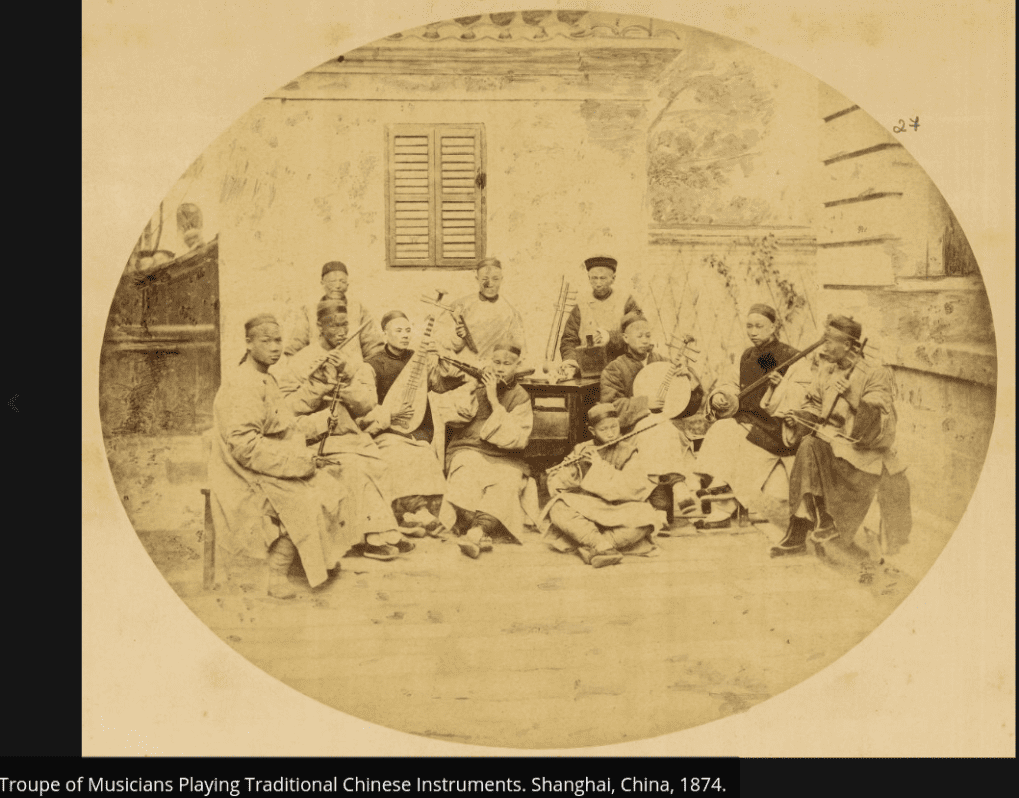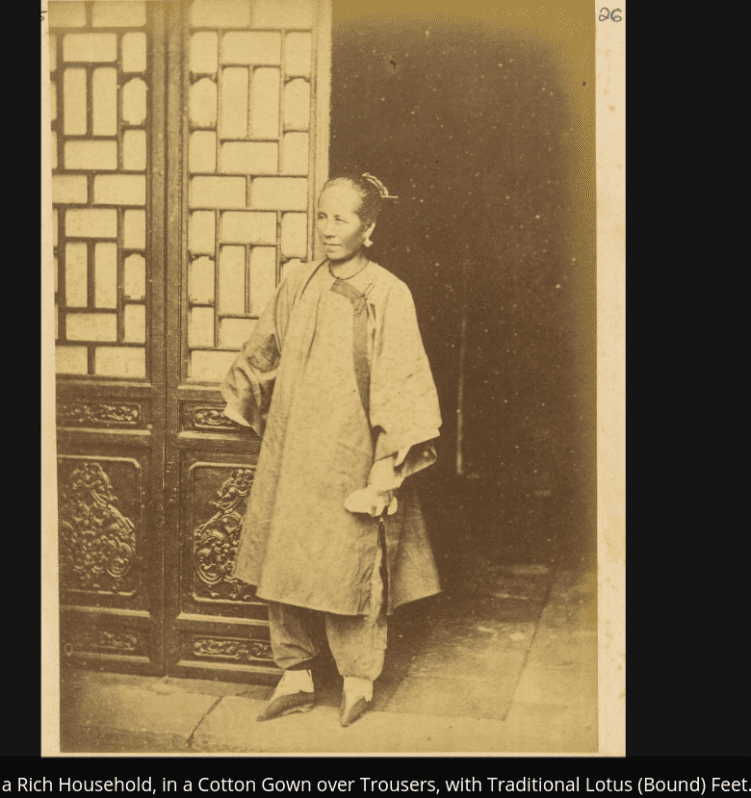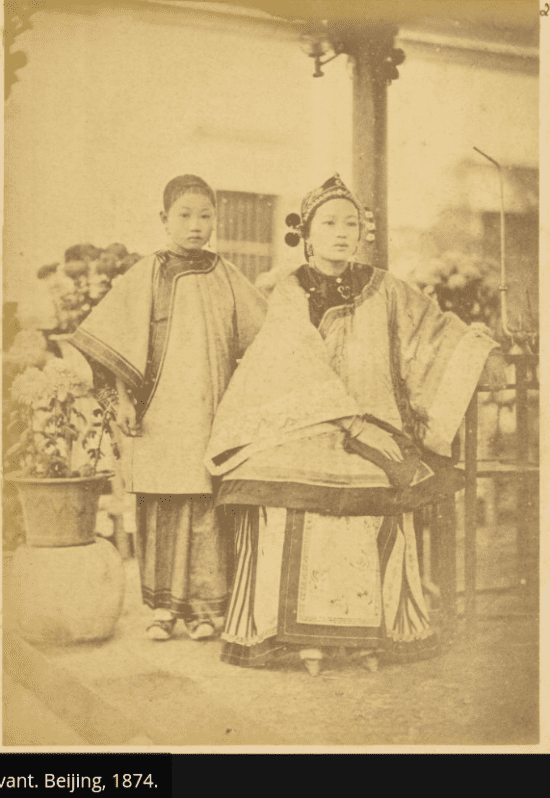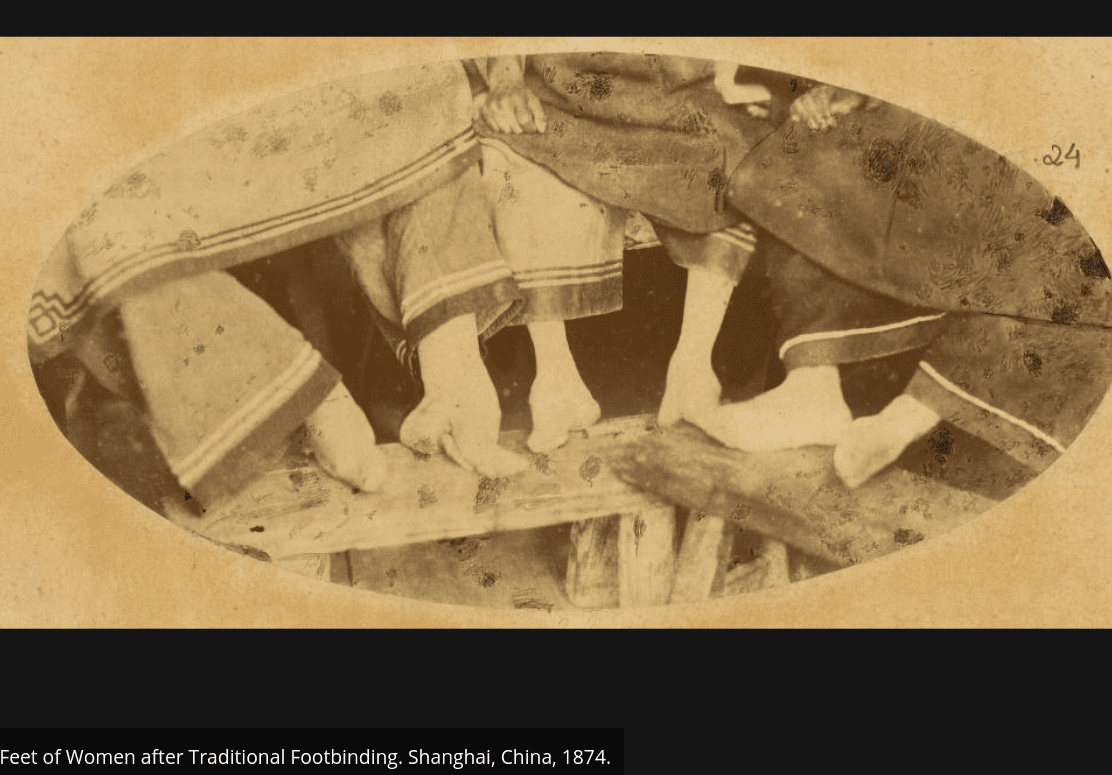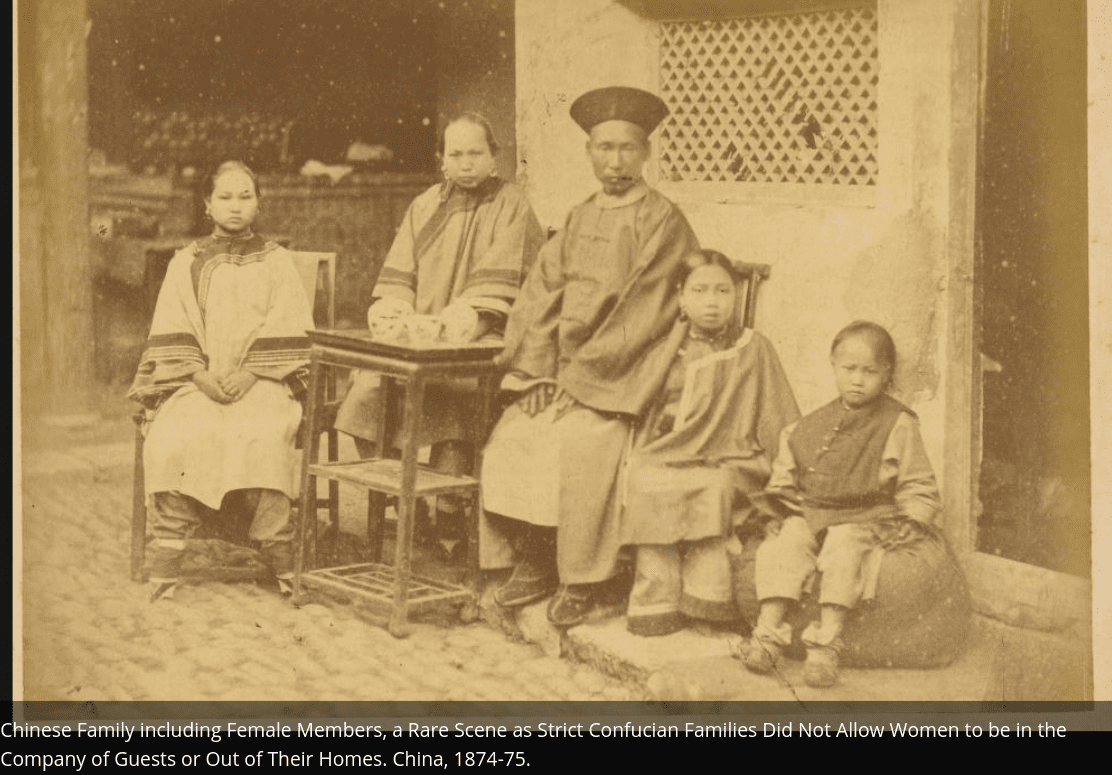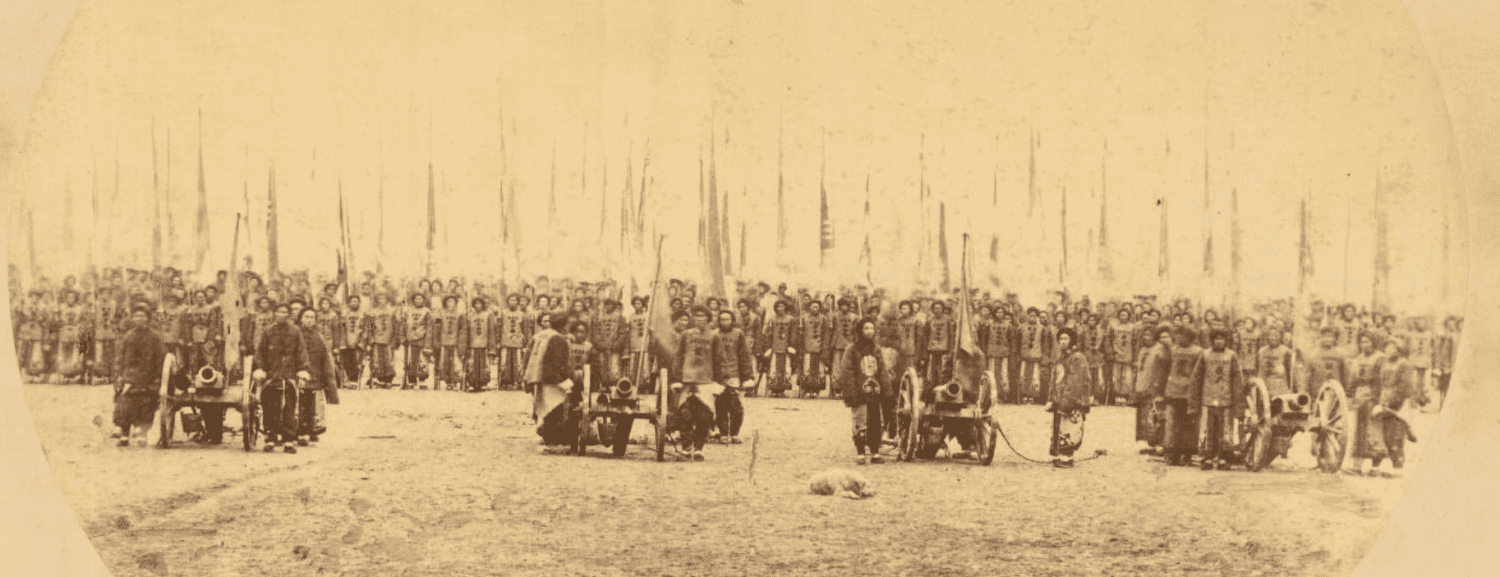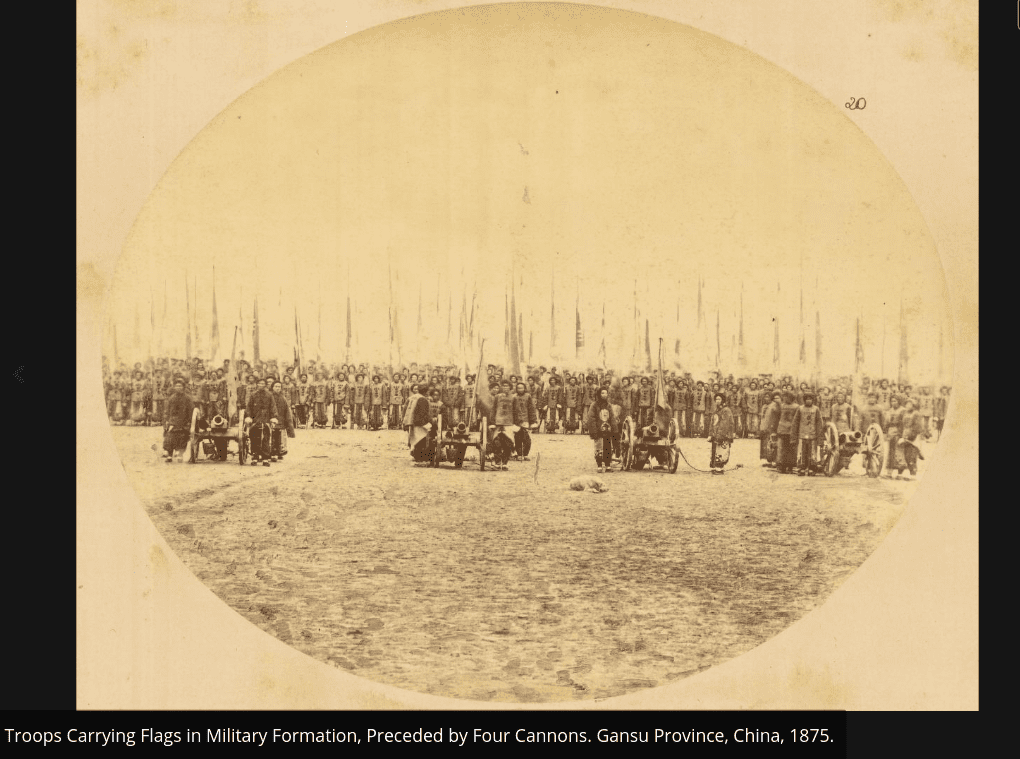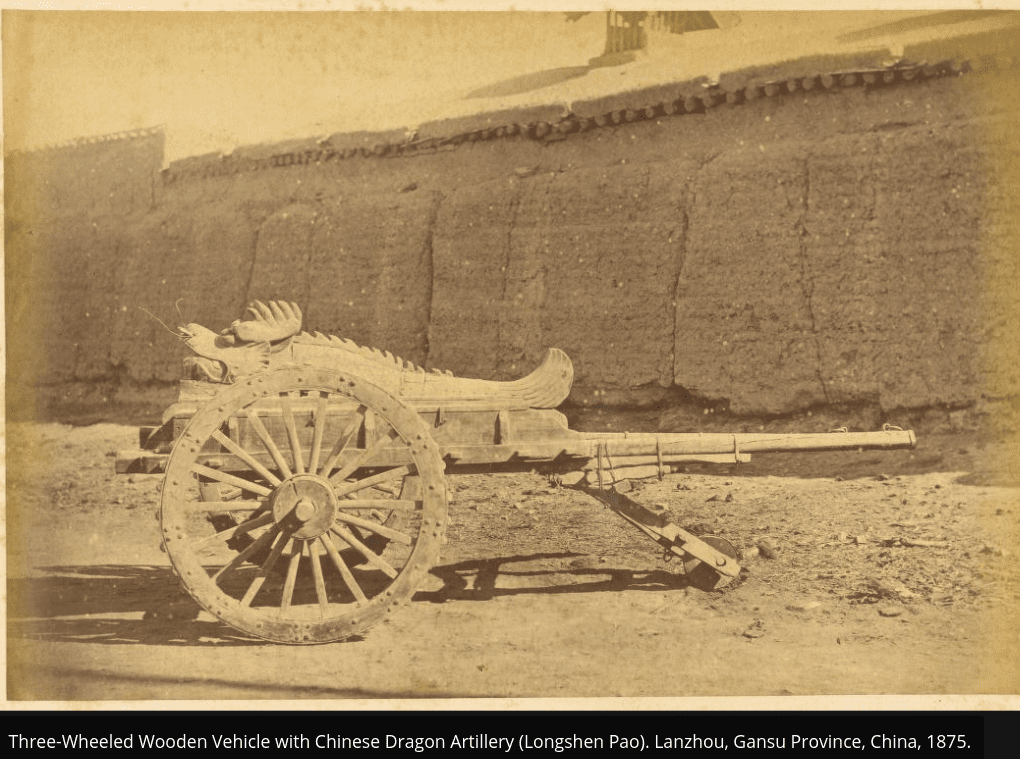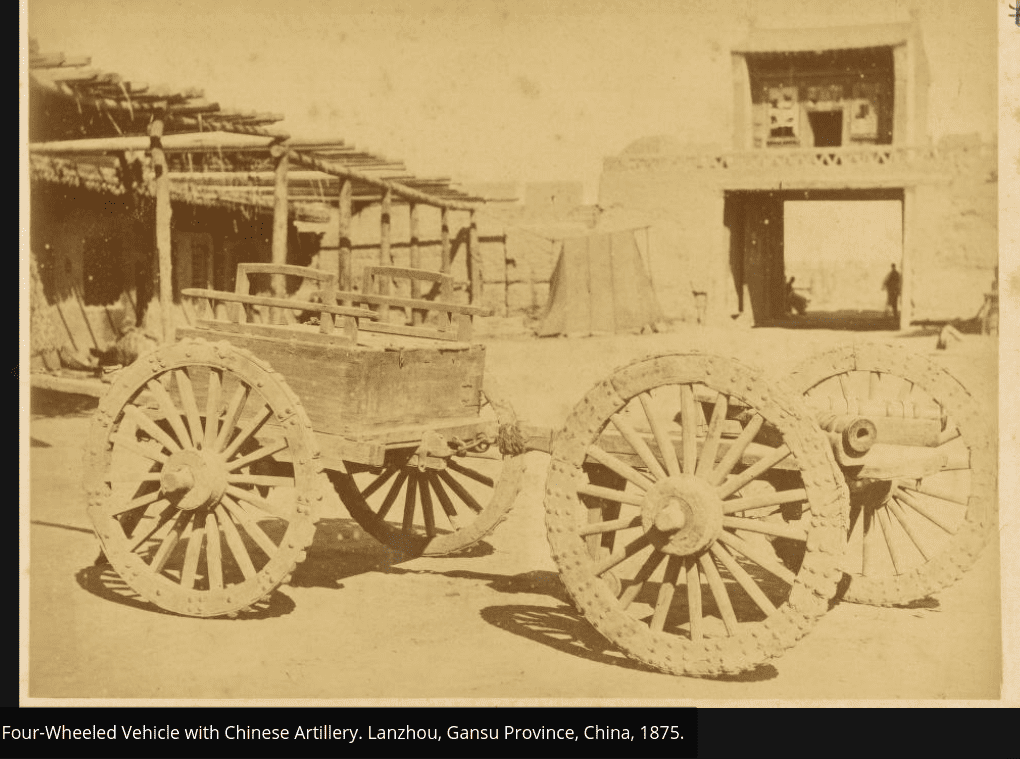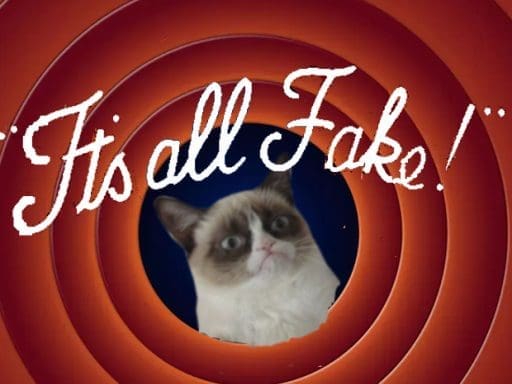Marco Polo and the Silk Road
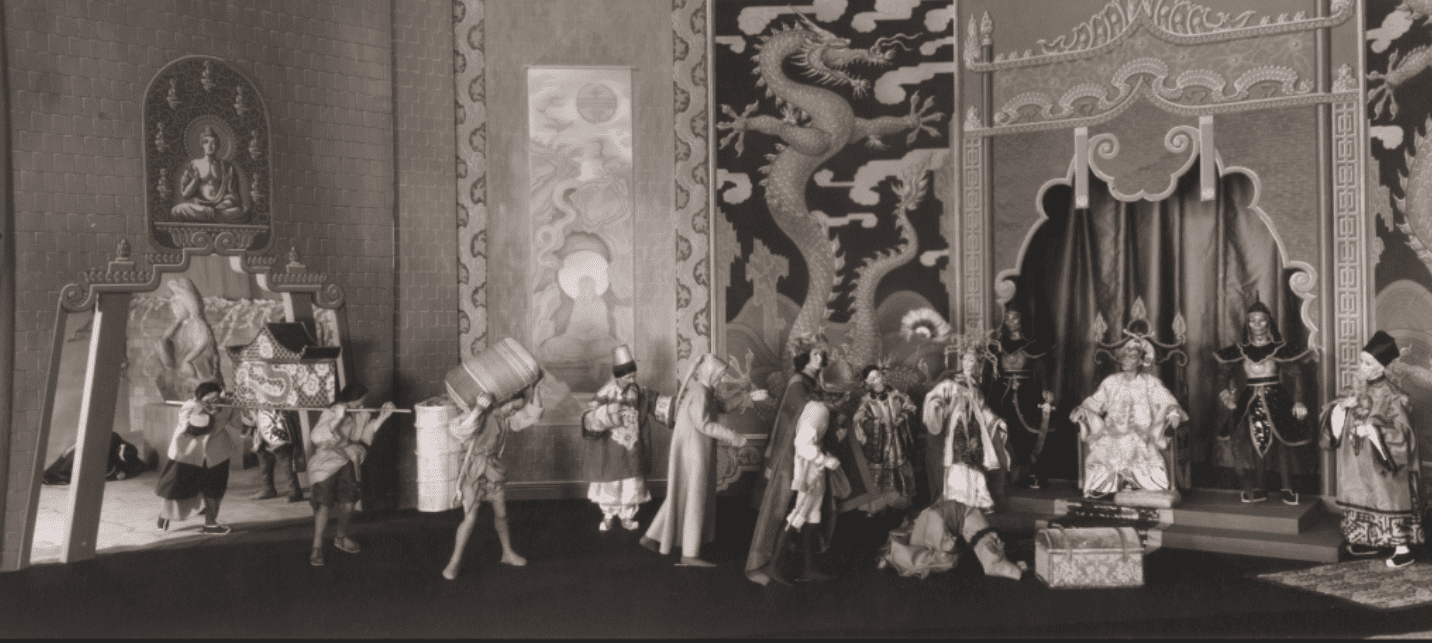
Marco is mentioned alot around here. He didn’t penetrate Tibet but, well he didn’t penetrate anything because he is a fictional character. He was made up bc the scriptwriters have to have something to start with. Nothing comes from nothing, I mean any time you see a fully developed body of knowledge…I mean where did the first map come from? Even Normies have open debates as to whether Polo was a real person or not. Most articles focus on whether he really introduced pasta or whether he really went to China or just repeated what he heard from traveling merchants on the Silk Road, critics say he never mentioned the Great Wall and didn’t know the Chinese language.
Polo was Venetian, which is a code word for Jew, or more accurately, a Cryptojew, which is the same thing, appropriately one of the things the texts draw attention to is his detail of currency. He doesn’t just mention it he describes in great detail the size and shape and explains the paper manufacturing and printing process and also the seals. This not only validates what history books claim but its seemingly validates money. They try to make money seem natural and long-standing. One of the most frequent discoveries on the Silk Road is old coins, as if every person that passed through had a hole in their change purse. Think about it, every single piece of currency printed before 1800 is counterfeit. They want you to think the currency system is old and normal. The Old World didn’t use money, the only thing the parasite class has introduced is money. Money only exists bc of the energy it steals from people by deception. People think its real, so it is real. Money is a black magick manifestation. Check out my paper on the Reset featured hidden on the old dollar bill. Its crazy. *The highest-volume struck piece of currency is the two pence ‘cartwheel’ printed in 1797… bc the Reset started in 1800 this gives a ‘living memory’ attachment and it is gigantic and heavy (hence the nickname) to make an impression on the target.
The other thing he expands on to the point he outs himself is the salt industry. The salt trade is what the area has of value that it can offer on the International market and it is used to connect a network based on regions. It works like this: a fake settlement is created and in it is some kind of evidence that there was activity for the nearby Salt Road, this will play out in the burial chambers at the Sky Caves to have elaborate staged scenes made up include exotic woods and textiles. Not only does this connect to the Silk Road, which is completely fiction, but it props up the other fake settlement in the whole entire landmass of Eurasia. Wood from trees harvested thousands of miles away; Shells from hundreds of miles, textiles are a big one. Dyes and fabrics can be traced to a point of origin. At the end of each branch of the road is another fake site. Its a whole self-supporting grid of fraudulent site that hold each other up, and thus a fake history.
Marco is the source for what we know about the kingdom of the Khans. Genghis and Kublai Khan (con) are the Napoleon and George Washington of Asia, they’re the fake founding fathers
- Here is an academic paper, a summary of a paper written by a Prof Vogel about the potentiality of a fictional Polo. His response is all the details left behind in Marco Polos journals are confirmed by what is in the archeological record. Polo intimately describes an ancient Chinese 5 dollar bill and then said-bills have been found in archeological digs, therefore Polo has been to China. It confirms everything I just said. The best part is Vogel has been involved in the Tibet project for several generations so far, he knows its all fake.
Marco supposedly was the first person to publish accounts of the Asian court for the Western world to read.
Aside from Polio there are two other sources that future archaeologists would use to find and confirm fake ancient sites. Chinese pilgrims, little known in the West, the Chinee Marco Polo. Their names escape me right now but I mention them in several spots in this essay, I’m writing myself a reminder rn to move them here.
Aurel Stein
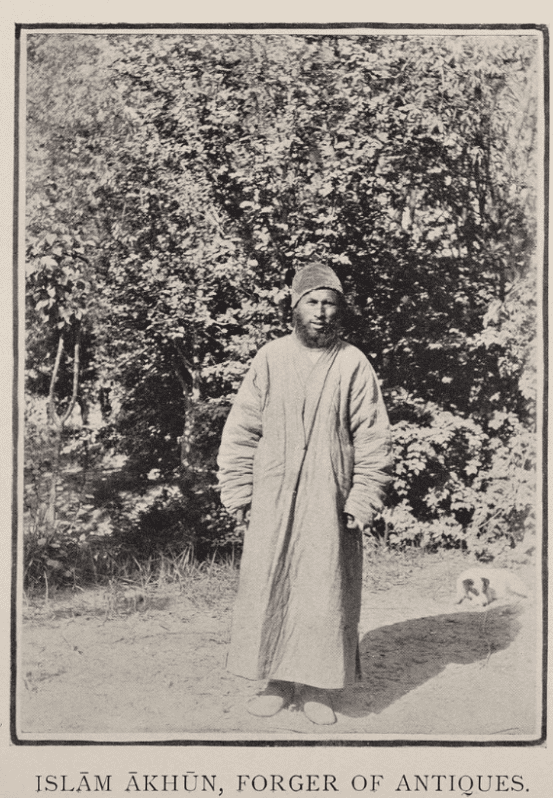
Nearly 800 Chinese Lotus Sutra manuscripts were discovered in a hidden cave in Dunhuang, China in 1900. They are thought to have been sealed there at the beginning of the 11th century. They are now part of the Stein Collection at the British Library. ‘Library Cave’ was found to contain 40,000 scrolls in Mogao cave 17
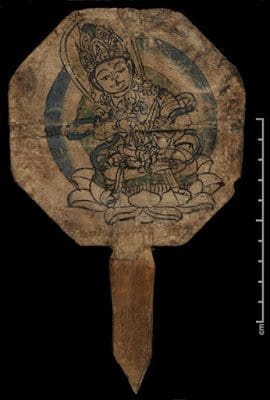
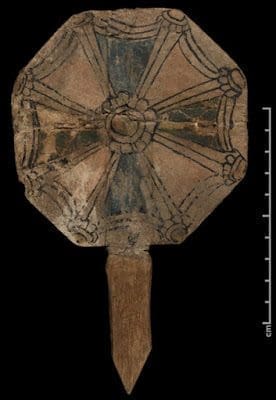
Roughly dated from the 9th to 10th centuries, the artifact from the Stain Collection is catalogued as a ritual implement and comes from the ‘Library Cave’ (Mogao Cave 17), near Dunhuang. It was acquired by Sir Aurel Stein, along with many other manuscripts and objects, during his second Silk Road expedition in 1906-08.
link here
The back is illustrated with some fairly intriguing geometric patterns. Have you ever come across similar designs before? Do you know what they represent? They remind me of a stylised cross-section of a vajra, a ritual object otherwise known as the ‘thunderbolt’ or ‘diamond sceptre’. Quintessential in Tibetan Buddhism, it represents the fundamental nature of the enlightened state as unbreakable and indivisible.
The association to the vajra makes more sense if we consider the iconography on the other side of the implement. The front depicts a cross-legged figure drawn in black and painted in blue and green. The swirling blue scarves, various princely ornaments and oval halo behind his head indicate that he is a bodhisattva (being on the path of becoming a Buddha). Sitting on a lotus flower, he is holding a vajra in the right hand, close to his heart, and a ritual bell called ghanta in the left hand, against his hip. He is also wearing a tall two-tiered crown displaying five Buddhas. These attributes allow us to identify him as Vajrasattva, the ultimate Buddha.
Although it is not square, this object is actually similar to tsakalis or tsaglis, miniature painted cards used in modern Tibetan rites. Normally produced as thematic sets, such as the one in the collection of the Metropolitan Museum of Art (see here), they can be laid together to form a mandala, or function individually to evoke a specific deity. Some tsakalis have been known to possess a stick so as to be placed on a shrine or held up during the ritual.
The precise function of this implement remains unknown, but it must also have played a role during religious ceremonies. In the Vajrayana, ‘vehicle of the vajra’, followers must receive an appropriate initiation or ’empowerment’ before they are able to engage in the meditation practices derived from the tantras. One way to do this is to venerate Vajrasattva in order to purify the mind, so it is quite possible that the object presented here served such a purpose.
In conclusion, like some of the manuscripts found in the Mogao Caves, it is quite possible that our ritual implement originated from a community of tantric practitioners active in the region. Its exact function and iconography are still something of a mystery and I would be delighted to hear from anyone with any theories they would like to discuss.
-Partial academic study of Iron Cross artifact
Wang Tao-Shih
Discoverer and restorer of ancient Buddist sites. He was a counterfeiter, and forger of manuscripts.
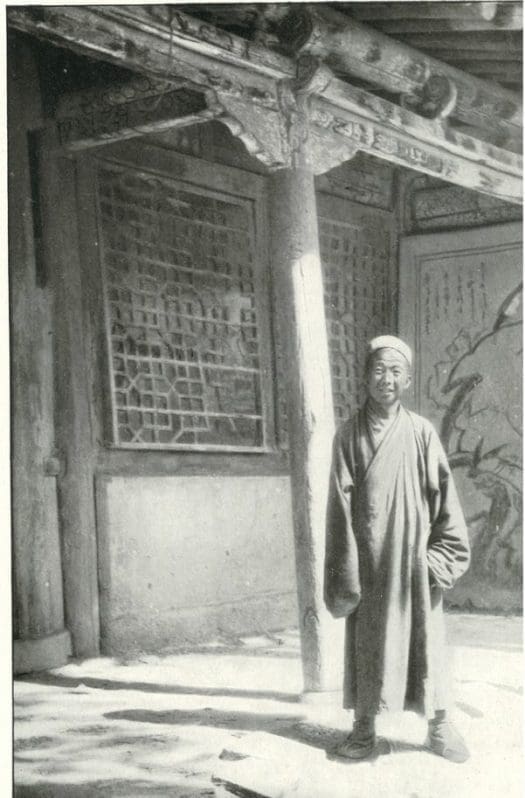
Abbot Wang, also known as Wang daoshi or Wang Tao-shih, is one of the most infamous figures in the history of Chinese archaeology. He was the Taoist priest (i.e. daoshi) who stayed at the Mogao Caves near Dunhuang, taking care of the Buddhist temple complex when Aurel Stein visited the site in the autumn of 1907. In 1900 Wang had found in one of the caves a hidden chamber filled to the ceiling with ancient manuscripts and silk paintings. It has become a legend how Stein convinced the priest to part with tens of thousands of scrolls in exchange for a modest donation towards the restoration of the temples. A few months after this the French sinologist Paul Pelliot appeared on the scene and was able to acquire another sizeable collection, which was, on account of his competence as a sinologist, in many ways superior to that of Stein. Next came the Japanese and later the Russian expeditions, each taking home collections of manuscripts.
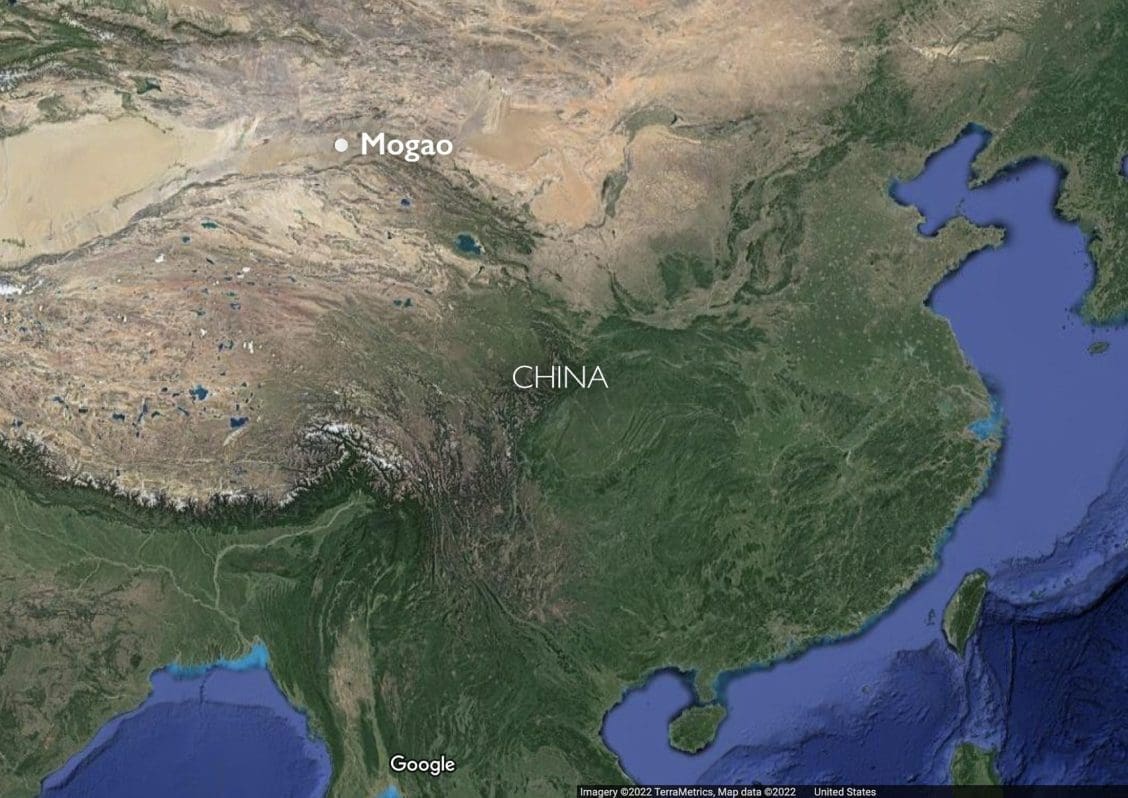
Although at the time there was little animosity towards either foreign explorers or Abbot Wang, with the rise of patriotic sentiments in the late 1920s, the transactions in retrospect received an increasing amount of negative publicity. As a result, Stein was branded a thief who deprived the country of an important piece of its national heritage, whereas Abbot Wang was perceived by the public as either a traitor who sold out his country to foreigners or simply a fool.
Images of the caves were first produced during World War II, when the famous contemporary Chinese painter Zhang Daqian spent time copying the cave paintings with his students. Photojournalist James Lo joined the effort by systematically photographing the caves using an ingenious system of mirrors to bounce natural light into the dark spaces. The Lo Archive (a set is now housed at Princeton University) consists of about 2,500 black-and-white photographs.
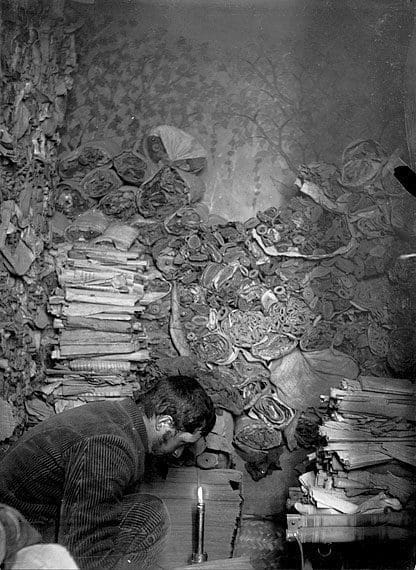
In recent years, teams have been working to create physical replicas of the caves that can be displayed at museums and other sites around the world. Virtual reality technology has also been used to create immersive media environments that replicate the experience of being in the caves, and preserve important data about the spaces’ measurements and other physical properties. These types of reproductions can also help reduce the effects of human presence in the caves by making digital reconstructions available at Dunhuang itself: visitors can spend time looking closely at these “digital caves,” allowing for stricter time limits and lower visitor numbers in the caves themselves. In addition, these digital versions can be shared easily around the world, along with a growing archive of high-quality photographs. The manuscripts and other objects from Cave 17, discussed above, have also been digitized and are available online.
Library Cave, 2003


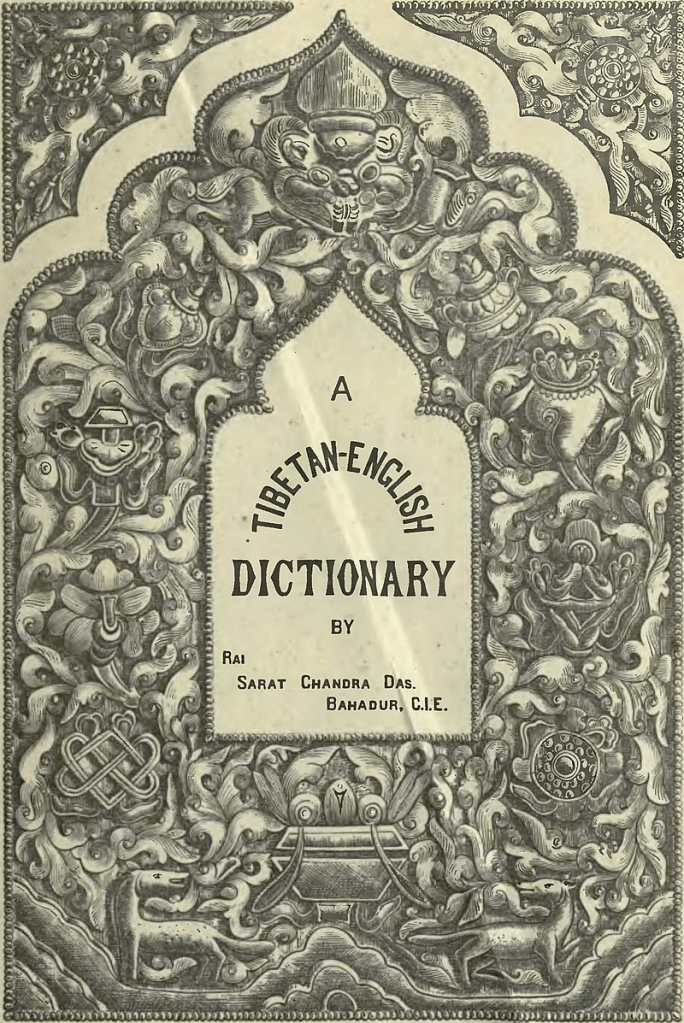
In 2003, an ancient library was discovered, hidden behind a wall inside the Buddhist Sakya Monastery.
The library wall is 200 ft long by 33 ft tall. Thats pretty big to be hiding unnoticed for hundreds of years, dont ya think. It contains 84,000 works that go back over 10,000 years.
The 10,000 year line was just supposed to be a click-bait headline, it was ‘proven’ false almost immediately but still published by all the normie outlets. They say if writing was existant 10,000 yrs ago they “…would have found evidence somewhere else by now.” As if lack of evidence proves anything, thats mainstream academics using a number 1 fallacy as its only argument.
Sarat Chandra Das was an Indian Scholar that helped script the Tibetan language and culture in 1879 and 1881. He writes in his account that there are volumes written in gold letters in the Sakya Library. Some manuscripts are six feet long and 18 inches in breadth. (666). Either the writing attributed to him from 1880’s was added in recently or he wrote about a fictional library which was then built recently and then uncovered, like “Ta-Da. It was here the whole time.”
According to historians, these manuscripts were made under the direct orders of emperor Kublai Khan. Khan is the Napoleon or George Washington of Asia, meaning he is a fictional character, an allegory for the Reset.
The monastery was said to have been started in the 11th century and finished in the 13th, only to have been burnt down later on. Restoration begun in 1948. This means it was maybe a pile of rubble and given an ancient monastery status in ’48.
After half a century of ‘conservation and preservation’ does it have the form we see today.
After the Lhasa uprising in 1959 most of the monks fled the monastery. During the Cultural Revolution in 1966, the northern monastery was totally destroyed again. What remains now is a two-story hall overlooking the southern monastery. It was rebuilt only in 2002, which is when the ‘discovery’ was made.



Kyaro Koto
Mentioned by Polio.
According to official history the Khara-koto site was first rediscovered by a Russian explorer named Botanin, who traveled through Inner-Mongolia in 1886 AD. The city was then visited a second time by Tsogt Badmajapov, a Russian explorer who had continued the work of Nikolai Przhevalsky in Mongolia and Tibet after his Death. Badmajapov only performed initial surveys, after which in 1908 a Russian expedition was sent off to the East to find the ruined city and seek archeological remnants and relics.
In 1909 AD, this expedition under leadership of the Russian explorer Colonel Pyotr Kuzmich Kozlov reached the ancient ruins and surveyed the site. Apart from the ancient walls of the fortified town, the scientists identified a sand buried Stupa, at some 400 meters outside of the City Walls opposite the Main Gate. Inside the Stupa lay a hidden treasure. Breaking inside Kozlov and companions found a large collection of scrolls, scriptures and art pieces.
vid Silk Road explorer Aurel Stein reached Khara-Khoto during his third Central Asian expedition in 1917 AD. Although the City was by then a deserted heap of ruins overblown by sand from the surrounding deserts, Stein surveyed the Khara-Khoto for eight days including archeological excavations (the findings from this research was incorporated in chapter 13 of Stein’s first volume of Inne
rmost Asia).
Finding the stupa which had hidden and preserved the documents found by Kozlov nearly completely destroyed, Stein still found over a 1000 historical artifacts among the ruins, most of which are now in Museums. Some of the most important finds were done among the garbage heaps of the deserted and ruinous city, revealing that Civilization at Khara-Koto had existed much longer than (westerners had) earlier thought. Inscribed pottery shards found by Stein reveal dates from the period of 1290 AD to 1366 AD. The texts derived from the Russian Expedition by Kozlov later revealed that the latest document among these was created in 1371 AD,
In 1925 AD the Khara-Koto site was visited by an american art historian, the Harvard Professor and Museum Director Langdon Warner, who documented it in a series of Photos which are now stored at the Houghton Library at Harvard University. Once at Khara-koto, Langdon, a notorious or famous ‘Hunter’ of ancient relics and art who in 1924 AD had taken away a Boddhisatva Statue and a section of Mural dated to the Tang Dynasty Era (618 AD – 907 AD) from Cave 328 at the Mogao Caves at Dunhuang, found nothing of value
Folke Bergman, a young Svedish archeologist who worked closely with Sven Hedin, first travelled to Khara-Khoto in 1927, returning in 1929 and staying for a year and a half in the area. He made maps of Khara-Khoto and Ejin River area, surveyed watchtowers and fortresses, finding a large number of xylographs. Bergman noted that Kozlov’s and Stein’s visits were cursory and some of their published documentation was partially incorrect.
Sven Hedin and Xu Bingchang led a Sino-Swedish Expedition on archaeological excavations of the site between 1927 AD and 1931 AD. After Hedin John DeFrancis visited in 1935 AD.
Further Chinese excavations, the first in 1983 and the second in the succeeding season of 1984 by a team from the Inner Mongolian Institute of Archaeology under supervision of Li Yiyou, have produced some 3,000 more manuscripts. In addition to books, these excavations unearthed building materials, daily items, production instruments and religious art. Since then, archeologists have found many more ancient ruins and remnants in the vicinity of Khara-koto. Most noteably hundreds of muslim tombs
Xin Jiang
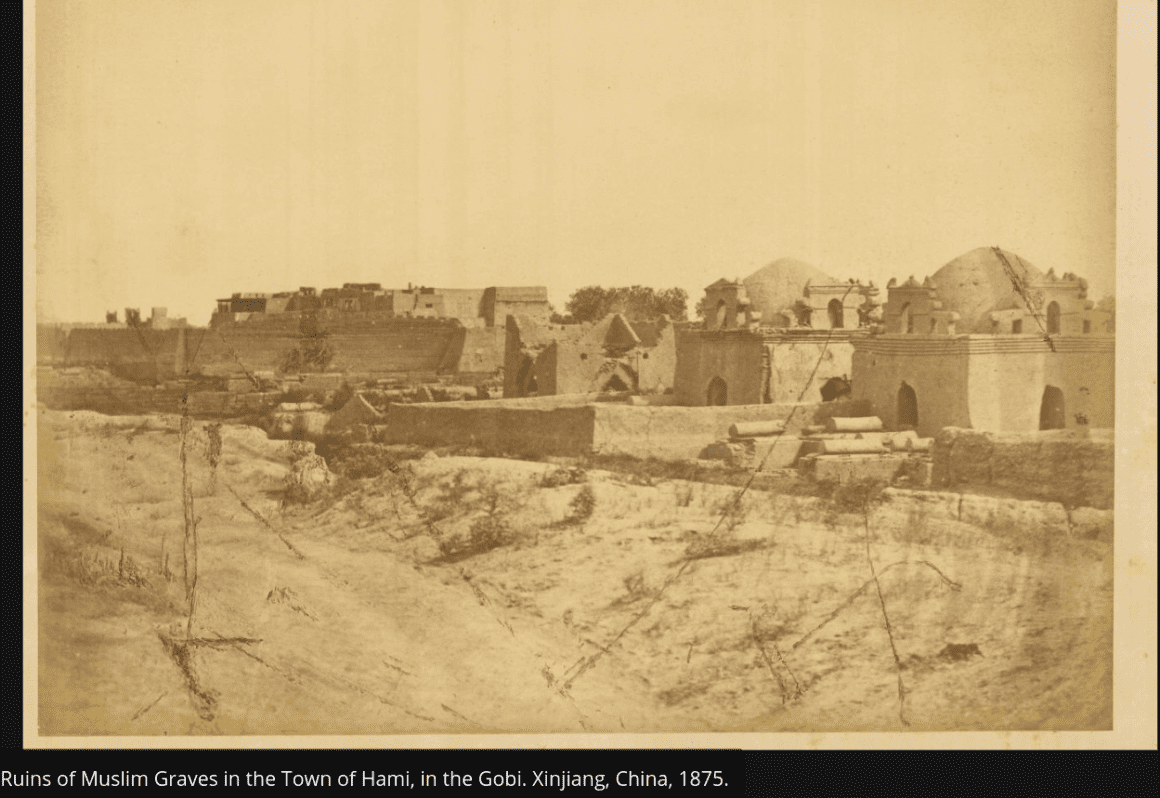
At the end of the 19Th Century and in the beginning of the 20Th Century, the region of Xinjiang would become part of what today is often refered to as the ‘Great Game’ for Central Asia. During this period a variety of international explorers tried to reach the remote far western region, mapping, digging and recording as they went. Apart from several Russian explorers, the West was best reconnoitered by Sven Hedin and (Sir). Marcus Aurel Stein who left large volumes of historicly valuable information.
In the 1950’s, Xinjiang Uygur became the scene of large scale and secretive military works. Apart from the task of guarding the border and strenghtening infra-structure for the Peoples Liberation Army, the main purpose of the military activities in these far western region was the building and developing of a (almost) home-grown Chinese Nuclear program.

During the later stages of this development, the remote stretches of the Taklamakan Desert on the border between Gansu, Inner-Mongolia Autonomous Region and Xinjiang Autonomous Region were chosen as the best location for nuclear testing and related secretive military activity.
The first Chinese nuclear-weapons test site was located at Lop Nor, where in the 1960’s China’s first crude nuclear device was exploded.
Lop Nor is situated near the entrance to the historic Hexi corridor running down from the High North near Lop Nur and Dunhuang, wedging between two mountain ridges and bending around the Heights of the Qinghai Plateaux to descend down and end at Lanzhou.
This section is dry and arid and often windy, and consist of barren graveled lands and salt lakes. Rivers, formed by melting waters from nearby mountains cut across the plain, but waters rapidly flow downstream to end up in the Yellow River (Huang He) near Lanzhou.
1980 AD, construction
of the two top-secret US lectronic signal (SIGINT) monitoring sites in Xinjiang, one at Qitai and the other Korla
These listening posts were manned by Chinese Nationals trained by the US Government to monitoring Soviet missile tests and other communications, electronic signals that the americans were unable to aquire after the Iranian revolutionaries closed down
Tracksman 1 and 2 in Iran.
The Top-Secret listening Stations in Qitai and Korla apparently continued their electronic spying operations until the end of the Soviet occupation of Afghanistan in 1989 AD.
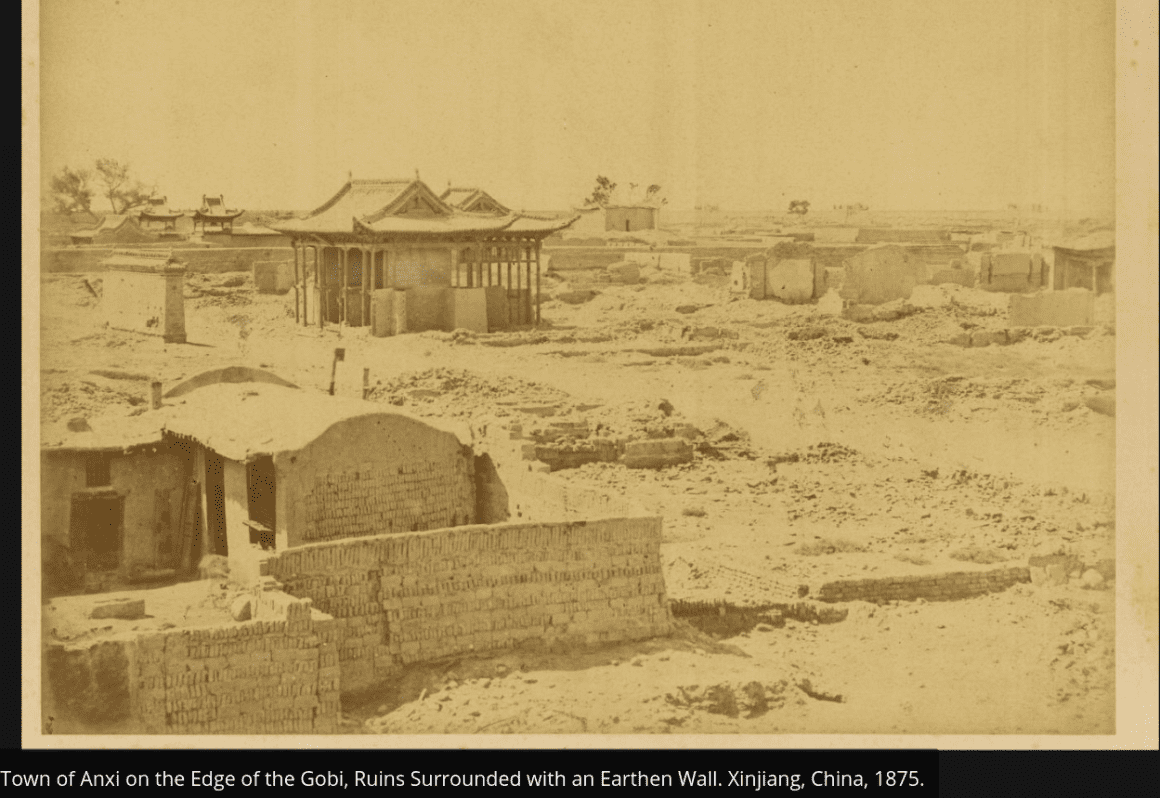
Russian Expedition of Scientific and Commercial Venture 1875
In 1874-75, the Russian government sent a research and trading mission to China to seek out new overland routes to the Chinese market, report on prospects for increased commerce and locations for consulates and factories, and gather information about the Dungan Revolt then raging in parts of western China. Led by Lieutenant Colonel Iulian A. Sosnovskii of the army General Staff, the nine-man mission included a topographer, Captain Matusovskii; a scientific officer, Dr. Pavel Iakovlevich Piasetskii; Chinese and Russian interpreters; three non-commissioned Cossack soldiers; and the mission photographer, Adolf Erazmovich Boiarskii. The mission proceeded from Saint Petersburg to Shanghai via Ulan Bator (Mongolia), Beijing, and Tianjin, and then followed a route along the Yangtze River, along the Great Silk Road through the Hami oasis, to Lake Zaysan, back to Russia. Boiarskii took some 200 photographs, which constitute a unique resource for the study of China in this period. Most of the photographs are included in this album, which later became part of the Thereza Christina Maria Collection assembled by Emperor Pedro II of Brazil and given by him to the National Library of Brazil.
Remember that first Russian expedition into China, I couldn’t find any info? I found it hiding in the Brazilian National Archive collection at the LOC. Its in the Brazilian library bc that is an Old World Seat of power in Modern Times. Its one single entity with infinite fractal patterns. Brazil is one.
The Americanized history says Russia first went into the orient in 1898, just before the European explorers came marching through. The thing is some of the local records say that the Russians were in and had been in for a long time. The BNA are in possession of a photoalbum they claim is from 1875, the first Russian Expedition for Scientific and Commercial Purposes.
The areas shown are the same ones that the European explores were stumbling across; the mounds of rubble that modern day academia says are the remains of Amazonian sex cult of Gingers were apparently inhabited in the recent past. Even in these pictures the town is ruins and the ruins themselves are so old they’re in decay.
The ruins are much older then 1875. There is too much of the Old World left. We see the first shift from energy spire to weathervane. What the mummy people have done is put an older date on this specific region bc they want to cover up that anyone ever was here.
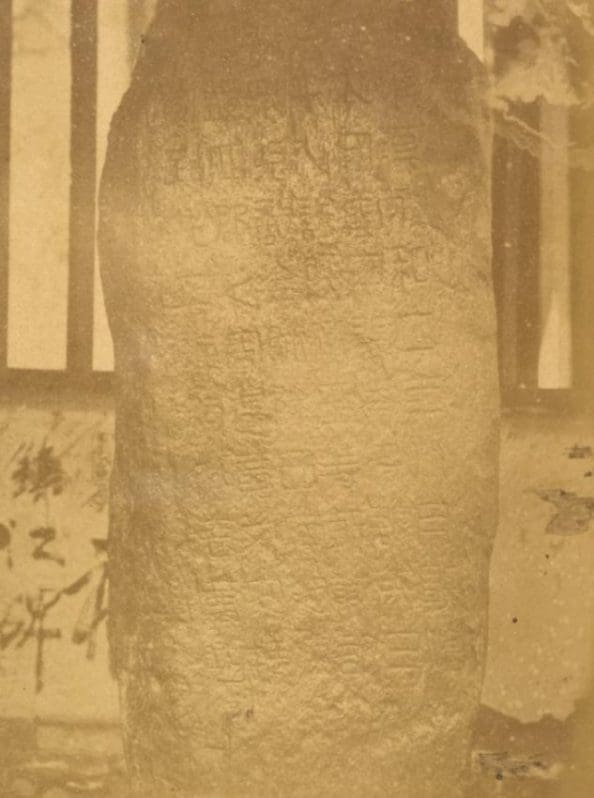
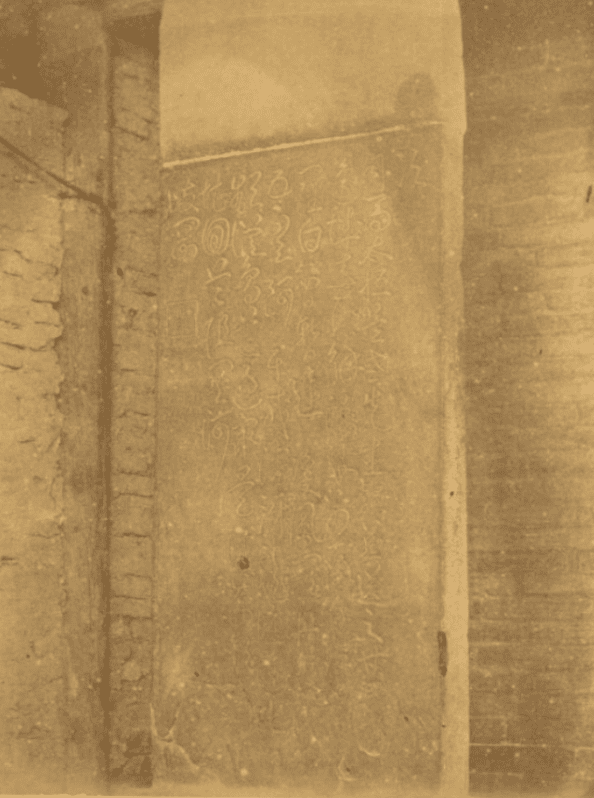
One of the common items mentioned but never detailed are the inscription stones. Here are two of them right here. A rough hewn ashlar and a finished stele, both with regular characters (language). One from Lanzhou and the other from Xinjiang. The pics attempt to show progression, both in writing and in block work. These are more fake evidence the mummies are an extension of.
Not only did they change the dates of the ruins and add mummies but they changed the whole area into aa nuclear bomb test site. Nukes arent even real for fux sake.

